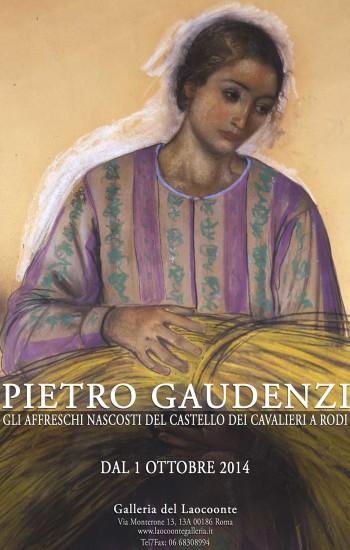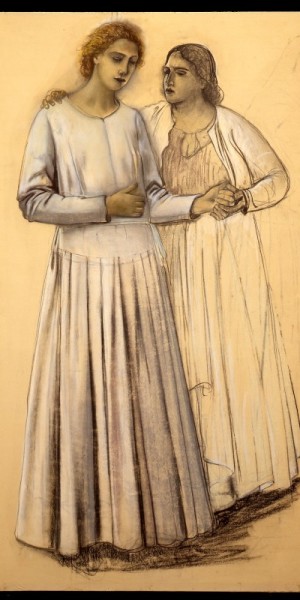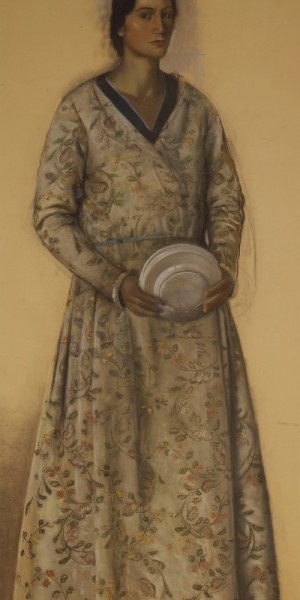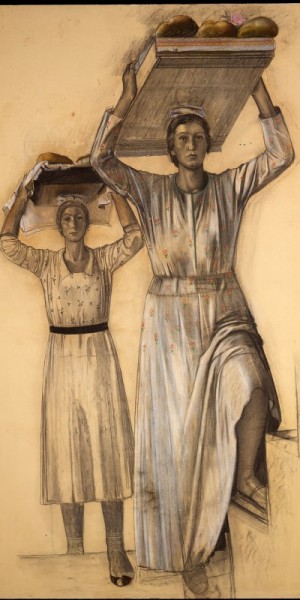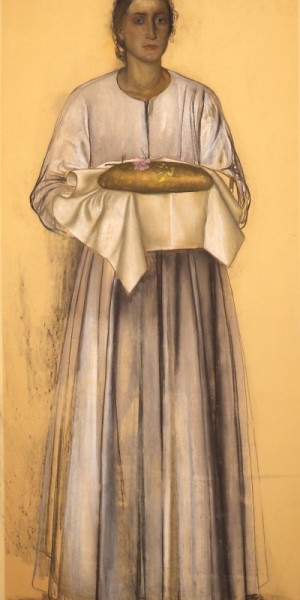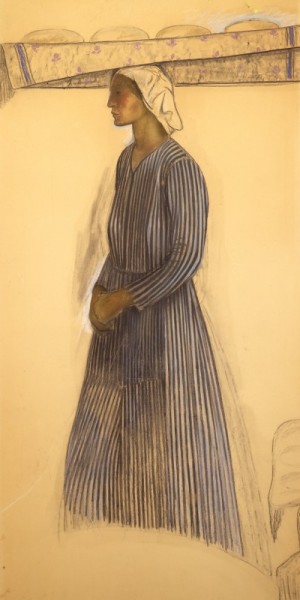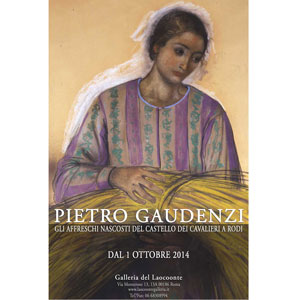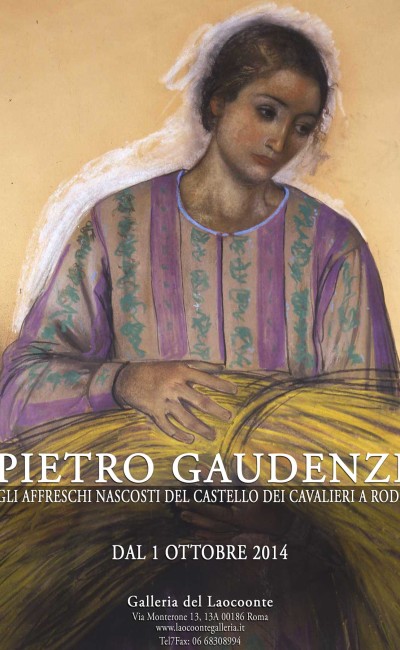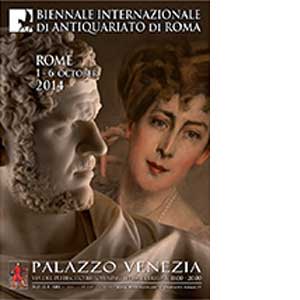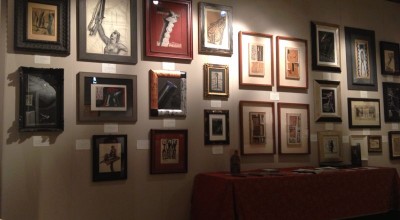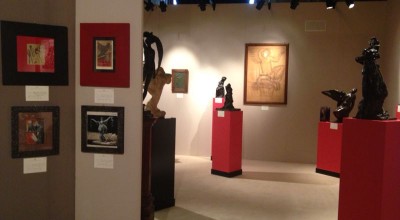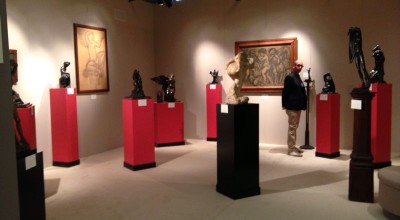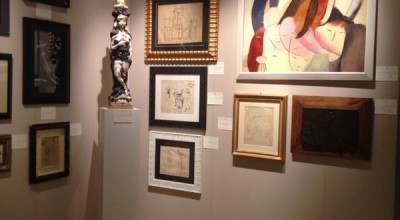GLI AFFRESCHI PERDUTI DEL CASTELLO DEI CAVALIERI DI SAN GIOVANNI A RODI
di PIETRO GAUDENZI (Genova 1880 – Anticoli Corrado 1955)
Sono completamente perduti gli affreschi del Castello dei Cavalieri a Rodi realizzati da Pietro Gaudenzi. Il recente sopralluogo ha confermato come, dell’importante ciclo di affreschi realizzati dal maestro nell’estate del 1938, non vi è più nulla, se non le nude pareti al posto dell’opera capitale nella poetica di Gaudenzi. Particolarmente significativa è, dunque, la mostra che la Galleria del Laocoonte presenta a Roma dal 1° di ottobre, composta dai cartoni preparatori degli affreschi, dai disegni, bozzetti ed una tavola ad olio, preliminari della monumentale opera perduta di Pietro Gaudenzi. Il nucleo, significativamente ricomposto dai curatori della mostra, Marco Fabio Apolloni e Monica Cardarelli, è l’ultima testimonianza rimasta delle pitture murali che occupavano due ambienti, la Sala del pane e la Sala della famiglia, del monumentale Castello sede del Governatorato italiano del Dodecaneso dal 1912 al 1943. Pertanto, la rassegna dedicata agli affreschi di Gaudenzi a Rodi, vuole essere anche un risarcimento alla memoria dell’autore.
Le pitture originarie, documentate da foto d’epoca e da un cinegiornale Luce, si trovavano al secondo piano, in sale che oggi sono escluse dalla visita. Le pareti, attualmente, mostrano solo i nudi blocchi di arenaria di cui sono composte: le pitture sono scomparse senza speranza. Inoltre, la parete divisoria delle sale è stata abbattuta al fine di comporre un unico ambiente, mentre i mosaici del pavimento rimangono invisibili sotto una pedana di legno coperta di moquette.
Per la prima volta, si presentano pubblicamente i cartoni a pastello, straordinari per delicatezza di tocco, che servirono alla realizzazione dell’opera a fresco. Si tratta di scene di genere o figure ritratte dall’artista nello svolgimento di umili occupazioni quotidiane nelle strade e nelle campagne di Anticoli Corrado. Guardando la mola di Anticoli, la Semina, la Mietitura, le donne che portano il pane su vassoi o allineato su un’asse portata in equilibrio sul capo, la splendida donna con la pagnotta infiorata, o la giovane con un fascio di spighe, non si può non ricordare la retorica della “Battaglia del Grano” mussoliniana, ma le figure di Gaudenzi – che pure sul tema vincerà anche, con un suo trittico dipinto, echeggiante gli affreschi di Rodi, il premio Cremona nel 1940 – sembrano imperturbabili, nella fissità delle loro consuetudini millenarie ed immutabili, all’enfasi trionfalistica del momento. I due cicli costituiscono una delle opere estreme dell’arte del Ventennio, ma diversa per lirica astrazione da tanto brutale muralismo di propaganda.
La GALLERIA DEL LAOCOONTE presenta, così, una rassegna di considerevole valore artistico di un maestro ancora troppo misconosciuto del Novecento italiano, e promuove, al contempo, un’iniziativa che è anche testimonianza storica.
Il progetto nacque per il più ridente angolo del nostro effimero Impero coloniale, l’incantevole isola di Rodi, che fu sede del Governatorato italiano del Dodecaneso dal 1912 al 1943. Il fascismo aveva modernizzato Rodi eleggendola a vetrina turistica e paragone d’eccellenza architettonica e urbanistica, sotto il governatorato di Mario Lago (1923-1936), giolittiano di formazione, che fu capace di armonizzare la presenza italiana con le comunità greca, turca ed ebraica sefardita, le quali concorrevano alla delicata miscela culturale dell’Isola delle Rose – rodon è rosa in greco antico – che la Seconda Guerra Mondiale ha distrutto per sempre.
Nel 1936 però, volle farsi nominare Governatore di Rodi – e Mussolini fu ben lieto di assecondarlo per toglierselo dai piedi – Cesare Maria De Vecchi (Casal Monferrato 1884-Roma 1959), conte di Val Cismon per meriti militari, già Ras di Torino e Governatore della Somalia.
Retorico, autoritario ed intollerante, laddove il suo predecessore era stato, prudente, razionale e liberale, il nuovo governatore elesse sua maggiore impresa la ricostruzione del Castello dei Cavalieri di Rodi. Forse tempio greco, poi fortezza bizantina, il castello fu costruito dall’Ordine dei Cavalieri di S. Giovanni che dovettero abbandonare l’isola ai Turchi nel 1522. Nel 1856 era stato distrutto dall’esplosione accidentale di una polveriera e adattato a carcere. Mario Lago avrebbe voluto restaurarlo per valorizzarlo come “superbo rudere”, De Vecchi invece volle ricostruirlo completamente, ottenendo un castello “nuovo”, quasi un fondale operistico o una scenografia cinematografica in cui ci si sorprende a toccare vera pietra e non cartone. L’ambiziosa opera, portata a termine in soli tre anni, costò 30 milioni di lire d’allora. Cinquecento tagliapietra e scalpellini furono fatti venire dalla Puglia, squadre di mosaicisti da Firenze e da Venezia per restaurare e mettere in opera nei pavimenti gli antichi mosaici trovati negli scavi archeologici di Coo. L’effetto è maestoso e straniante, gli inglesi che occuparono l’isola fino al ’47 lo descrissero come “a fascist Folly”, oggi è il monumento più visitato di tutta Rodi.
Ancora più atemporali sono i cartoni e le figure della sala della famiglia: una Visitazione e la grande Natività. Lo sposalizio, o meglio il banchetto di nozze è invece il soggetto di una grande tavola dipinta ad olio che però potremmo definire piccolo bozzetto, se pensiamo al precedente “Sposalizio”, di cui il nostro è un eco, che Gaudenzi presentò alla biennale di Venezia del 1932: era alto due metri e mezzo e lungo sette metri. Fu pagato 130mila lire e acquistato dal Senatore Borletti di Milano. Oggi non sappiamo che fine abbia fatto. Di quest’opera capitale nella poetica di Gaudenzi in galleria sarà mostrata su uno schermo la documentazione fotografica, in scatti d’epoca in bianco e nero. Tanto l’aveva cara che egli la replicherà, e non certo per pigrizia, in una delle pareti della Sala della famiglia a Rodi. Nozze di Cana senza miracolo, o pranzo nuziale di Maria e Giuseppe se avessero potuto permetterselo, Gaudenzi presenta la festa con la ieraticità di una storia sacra. Il fatto è che ci mette del suo: sposatosi nel 1909 con la bella modella anticolana Candida Toppi, ne farà, assieme ai quattro figli avuti da lei, il soggetto costante della sua pittura, allora tardo impressionistica. Due figli morirono piccoli e l’epidemia di spagnola portò via Candida. Si risposò con Augusta, sorella della moglie, venuta a Milano per badare ai nipoti orfani. Da lei ebbe Maria Candida e Jacopo. Non per maniera Gaudenzi è pittore della maternità e degli affetti familiari. Si ha la forte impressione che egli abbia trovato nella pittura e saputo trasmetterne la consapevolezza a chi la guarda ciò che è impossibile: che vi sia un luogo dove i vivi e i morti che si sono amati possano convivere senza stupore, ma officiando i gesti della vita di tutti i giorni.
Schivo, taciturno creatore di un mondo e di un umanità incantata in cui i modelli contadini, da lui ritratti dal vero nel paese di Anticoli Corrado, che egli elesse ad Arcadia personale, sono trasfigurati per grazia poetica, in modo che l’umano e il divino si confondano: così in Gaudenzi una Sacra Famiglia diventa una famiglia, una Visitazione una visita tra comari, uno Sposalizio un semplice banchetto di nozze, senza che il senso del sacro venga meno, ma senza che questo tradisca il senso del vero. E’ la bellezza dell’umiltà della leggenda cristiana, tante volte meravigliosamente vestita in pittura, che Gaudenzi ha saputo riportare come declinazione purista del Novecento italiano. Con semplicità e finezza sincere.
La mostra sarà aperta a partire dal 1 ottobre 2014, presso la Galleria del Laocoonte, Via Monterone 13.
Chiuso il lunedì. Orario: mar.-sab. 10-13, 15,30-19.
Catalogo in preparazione. A cura di Marco Fabio Apolloni e Monica Cardarelli, schede di Tonino Coi.
Ufficio Stampa: Rosi Fontana Press & Public Relations,info@rosifontana.it
Galleria del Laocoonte
Via Monterone 13/13 A
00186 Roma
Tel. 06/68308994
www.laocoontegalleria.it
laocoontegallery@libro.it
Orario: martedì – sabato 10:00 -13:00, 15:30 -19:30.
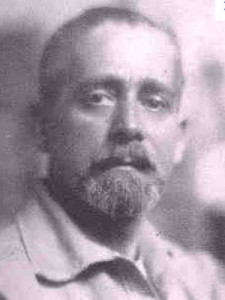 Libero Andreotti was born in Pescia on 15th June 1875. He worked as a blacksmith until the age of seventeen, when he moved to Lucca and met Giovanni Pascoli who introduced him to art. With the support of his Uncle he found a job at the publisher Sandron in Palermo as illustrator of the socialist weekly ‘la Battaglia’. In 1899, disappointed with his environment, he returned to Florence where he worked as a typographer. Libero Andreotti arrived to sculpture relatively late, it wasn’t until 1902 when he was encouraged by friends Galileo Chini, Oscar Ghiglia and Adolfo De Carolis to enter into this area. It was shortly after this time that he moved to Milan where he met Vittore Grubicy, who noticed his talent and took him to participate at the seventh International Exhibition of Art at the Biennale di Venezia. In 1906, in Milan, he joined the group of the divisionisti. From 1907 to 1914 he lived in Paris where he was influenced by Bourdelle and J. Bernard. In 1911 he held a personal exhibition at the Bernheim Jeune gallery, achieving considerable success. Following the outbreak of the First World War he had to return to Italy. Once back in his homeland his research moved into the monumental, referencing Romanesque sculpture and fifteenth-century Florence. Works belonging to this period include the war memorials of Roncade (1922) and Saronno (1924); the Pieta and the reliefs in the Chapel of the Italian Mother in Santa Croce in Florence (1924-1925); the risen Christ in the Victory monument in Bolzano (1928). He died in Florence on 4th April 1933.
Libero Andreotti was born in Pescia on 15th June 1875. He worked as a blacksmith until the age of seventeen, when he moved to Lucca and met Giovanni Pascoli who introduced him to art. With the support of his Uncle he found a job at the publisher Sandron in Palermo as illustrator of the socialist weekly ‘la Battaglia’. In 1899, disappointed with his environment, he returned to Florence where he worked as a typographer. Libero Andreotti arrived to sculpture relatively late, it wasn’t until 1902 when he was encouraged by friends Galileo Chini, Oscar Ghiglia and Adolfo De Carolis to enter into this area. It was shortly after this time that he moved to Milan where he met Vittore Grubicy, who noticed his talent and took him to participate at the seventh International Exhibition of Art at the Biennale di Venezia. In 1906, in Milan, he joined the group of the divisionisti. From 1907 to 1914 he lived in Paris where he was influenced by Bourdelle and J. Bernard. In 1911 he held a personal exhibition at the Bernheim Jeune gallery, achieving considerable success. Following the outbreak of the First World War he had to return to Italy. Once back in his homeland his research moved into the monumental, referencing Romanesque sculpture and fifteenth-century Florence. Works belonging to this period include the war memorials of Roncade (1922) and Saronno (1924); the Pieta and the reliefs in the Chapel of the Italian Mother in Santa Croce in Florence (1924-1925); the risen Christ in the Victory monument in Bolzano (1928). He died in Florence on 4th April 1933.

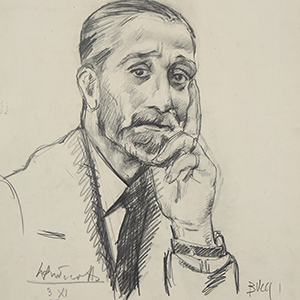

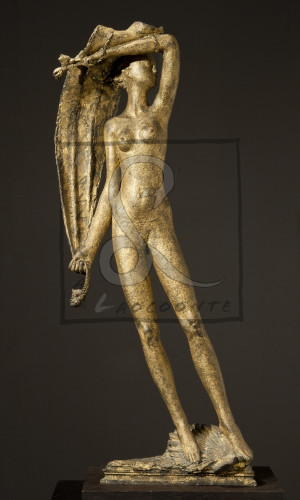

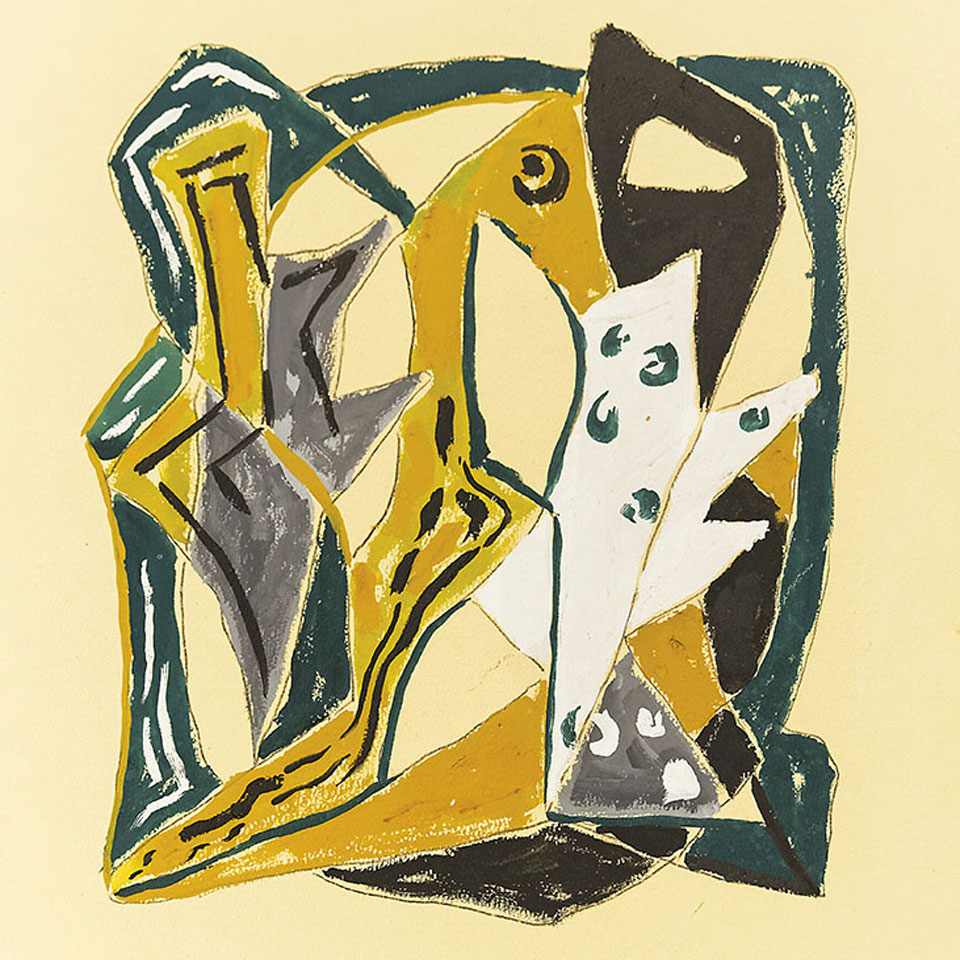
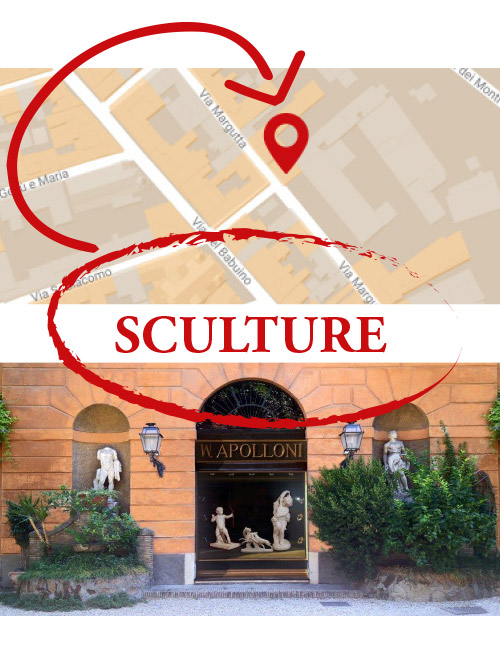
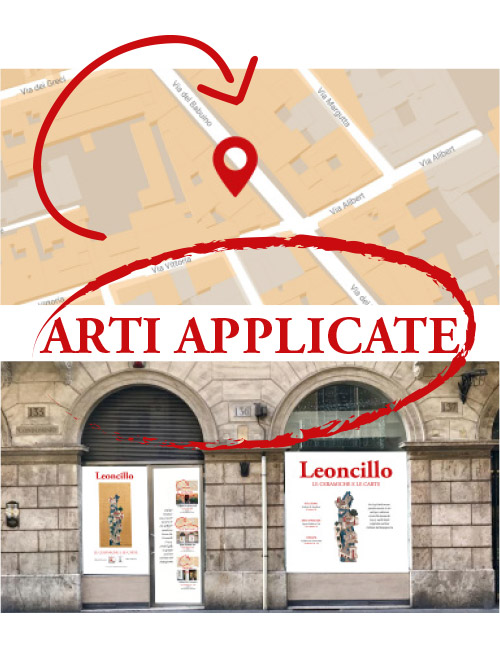
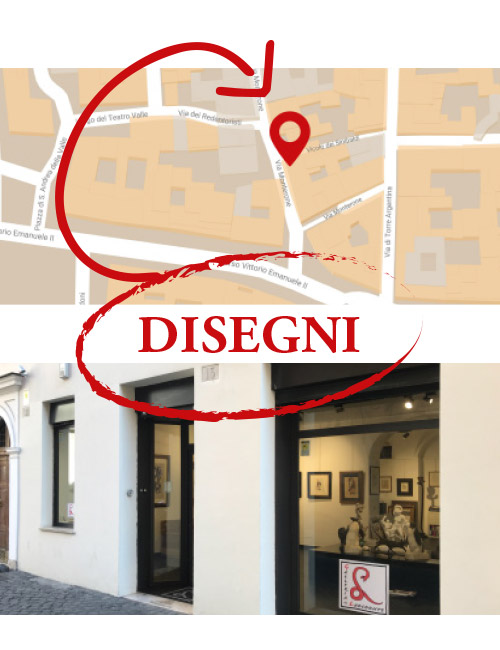

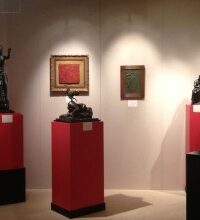
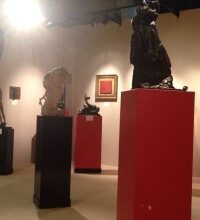
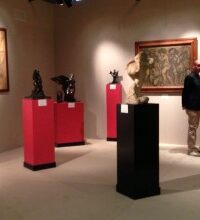

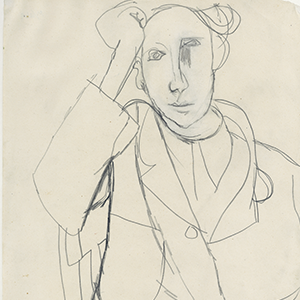
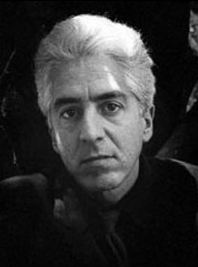
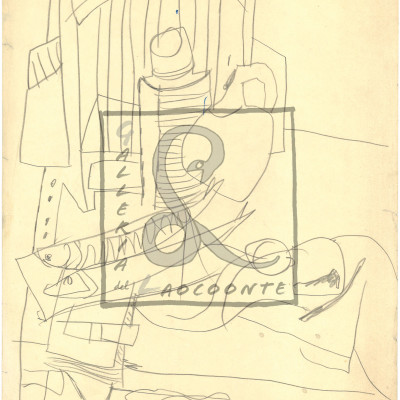
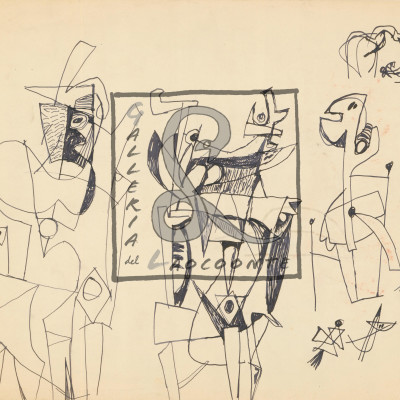
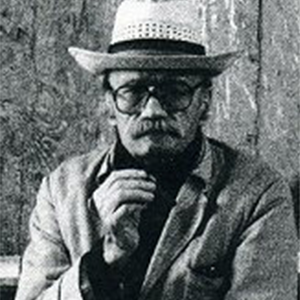
 Angelo Biancini was born in Castelbolognese in 1911. In 1929 he enrolled at the Art Institute of Florence where, above all, he attended the classes of Libero Andreotti, a teacher for whom he would always show appreciation and respect. His first studio was a large room in a former convent, where he devoted himself primarily to maiolica, before moving towards modelling and sculpture. In 1932 he began to exhibit his works in public, and in 1934 came his first statement, with his ‘Lupa’ winning the sculpture section of ‘Littoriali dell’arte’ in Rome. Also in 1934 he participated for the first time at the Venice Biennale. Following on from this he designed objects which were then made by ENAPI to take part in ‘VI Triennale di Milano’. In 1935, he created the statue of the victorious Athlete in the Foro Mussolini (now Stadio dei Marmi) in Rome. Also in Rome in 1935 he exhibited at ‘II Quadriennale d’arte Nazionale’, and in 1937 he made two sculptures for ‘Ponte della Vittoria’ in Verona. From 1937 to 1940 he lived in Laveno, collaborating with Guido Andlovitz and contributing to the artistic direction of ‘Soceita Ceramica Italiana’. During his years in Laveno, Biancini strengthened his relationship with ceramics (between object, portrait and monumental sculpture). In 1942 he entered the Art Institute for Ceramics in Faenza and, post-war, he succeeded Domenico Rambelli as the Head of Plastic Art. By this time the figure of Biancini had emerged as one of the most prominent among the new generation of Italian sculptors. In addition to teaching, he continued to create new work, with participation in the most important national art competitions, for which he received unanimous praise, even winning the national award at the ‘Quadriennale Romana’ in 1943. At two further exhibitions in Milan, 1948 and 1956, at ‘Galleria San Fedele’ he attracted yet more critical acclaim across the nation. The following years brought many awards: at the Palace of Exhibitions Milan he won the Bagutta for sculpture (1961). In the same year, he also won an award with the bronze ‘St. John in the Desert’ at the International Exhibition ‘Arte Sacra di Trieste’, where he won again in 1963 with ‘The Sacred Shepherd’. Of particular significance are the relief in the Basilica of Nazareth (1959), the canopy of the Temple of the Canadian Martyrs in Rome (1961), and the sculptural cycle for the Hospital Maggiore in Milan (1964). In 1973, two events were organised in his honour in Rome: at Palazzo Braschi, where a complete overview of his sculptures in bronze was shown, he was also given his own room in the Religious Modern Arts Collection of the Vatican Museums. In 1980, the Municipality of Faenza gave, with a gold medal, honorary citizenship and at the same time prepared a major tribute to the ‘Palazzo delle esposizioni’. In 1981, he reached the age of retirement, leaving the Art Institute of Faenza and continuing to work in a studio in the immediate vicinity. He died in Castelbolognese in 1988, the small town where he was born.
Angelo Biancini was born in Castelbolognese in 1911. In 1929 he enrolled at the Art Institute of Florence where, above all, he attended the classes of Libero Andreotti, a teacher for whom he would always show appreciation and respect. His first studio was a large room in a former convent, where he devoted himself primarily to maiolica, before moving towards modelling and sculpture. In 1932 he began to exhibit his works in public, and in 1934 came his first statement, with his ‘Lupa’ winning the sculpture section of ‘Littoriali dell’arte’ in Rome. Also in 1934 he participated for the first time at the Venice Biennale. Following on from this he designed objects which were then made by ENAPI to take part in ‘VI Triennale di Milano’. In 1935, he created the statue of the victorious Athlete in the Foro Mussolini (now Stadio dei Marmi) in Rome. Also in Rome in 1935 he exhibited at ‘II Quadriennale d’arte Nazionale’, and in 1937 he made two sculptures for ‘Ponte della Vittoria’ in Verona. From 1937 to 1940 he lived in Laveno, collaborating with Guido Andlovitz and contributing to the artistic direction of ‘Soceita Ceramica Italiana’. During his years in Laveno, Biancini strengthened his relationship with ceramics (between object, portrait and monumental sculpture). In 1942 he entered the Art Institute for Ceramics in Faenza and, post-war, he succeeded Domenico Rambelli as the Head of Plastic Art. By this time the figure of Biancini had emerged as one of the most prominent among the new generation of Italian sculptors. In addition to teaching, he continued to create new work, with participation in the most important national art competitions, for which he received unanimous praise, even winning the national award at the ‘Quadriennale Romana’ in 1943. At two further exhibitions in Milan, 1948 and 1956, at ‘Galleria San Fedele’ he attracted yet more critical acclaim across the nation. The following years brought many awards: at the Palace of Exhibitions Milan he won the Bagutta for sculpture (1961). In the same year, he also won an award with the bronze ‘St. John in the Desert’ at the International Exhibition ‘Arte Sacra di Trieste’, where he won again in 1963 with ‘The Sacred Shepherd’. Of particular significance are the relief in the Basilica of Nazareth (1959), the canopy of the Temple of the Canadian Martyrs in Rome (1961), and the sculptural cycle for the Hospital Maggiore in Milan (1964). In 1973, two events were organised in his honour in Rome: at Palazzo Braschi, where a complete overview of his sculptures in bronze was shown, he was also given his own room in the Religious Modern Arts Collection of the Vatican Museums. In 1980, the Municipality of Faenza gave, with a gold medal, honorary citizenship and at the same time prepared a major tribute to the ‘Palazzo delle esposizioni’. In 1981, he reached the age of retirement, leaving the Art Institute of Faenza and continuing to work in a studio in the immediate vicinity. He died in Castelbolognese in 1988, the small town where he was born.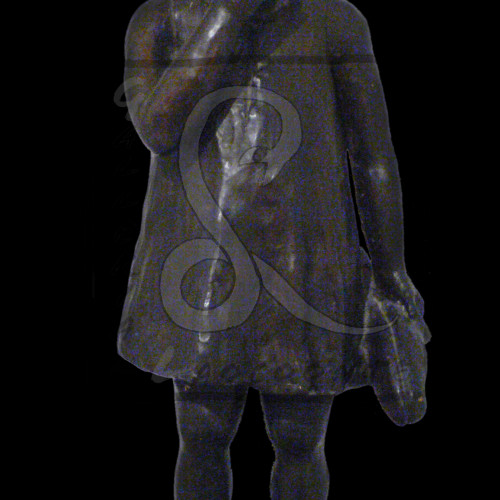
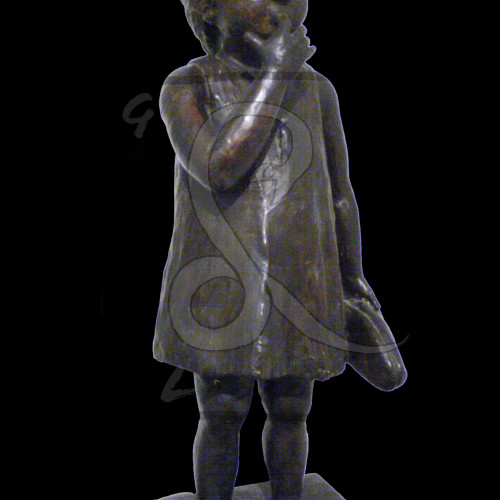

 Antonio Biggi was born in Carrara on 19th October, 1904. The son of a stonemason, he worked for a long time in Rome, with a studio on via Margutta. He exhibited at ‘VI Sindacale Fascista del Lazio’ (1936) with ‘Ritratto del Pittore Saitto’ and ‘Adolescente’ and at ‘I Mostra Nazionale d’Arte Sportiva’ with ‘Discobolo’. In the same year he created the portrait of Vittorio Emanuele II in bronze for the ‘Aula della Corte di Assise del Tribunale di Littoria’. He was also present at the VII (1937), VIII (1938), IX (1940) and the X (1942) ‘Sindacale Fascista del Lazio’ and in 1939 he exhibited ‘Marzia’ at the third Quadrenniale in Rome. In 1941, he created a decorative panel for the ‘Casa del Fascio Littorio’. Following on from this he exhibited again at the IV (1943), VI (1951), VII (1955) and VIII (1959) Rome Quadrenniale. After the Second World War he won the contest to design the bronze doors of St. Peter’s Basilica and created the portal of ‘Chiesa degli Artisti’ in Rome. He remained in Rome until his death in 1966.
Antonio Biggi was born in Carrara on 19th October, 1904. The son of a stonemason, he worked for a long time in Rome, with a studio on via Margutta. He exhibited at ‘VI Sindacale Fascista del Lazio’ (1936) with ‘Ritratto del Pittore Saitto’ and ‘Adolescente’ and at ‘I Mostra Nazionale d’Arte Sportiva’ with ‘Discobolo’. In the same year he created the portrait of Vittorio Emanuele II in bronze for the ‘Aula della Corte di Assise del Tribunale di Littoria’. He was also present at the VII (1937), VIII (1938), IX (1940) and the X (1942) ‘Sindacale Fascista del Lazio’ and in 1939 he exhibited ‘Marzia’ at the third Quadrenniale in Rome. In 1941, he created a decorative panel for the ‘Casa del Fascio Littorio’. Following on from this he exhibited again at the IV (1943), VI (1951), VII (1955) and VIII (1959) Rome Quadrenniale. After the Second World War he won the contest to design the bronze doors of St. Peter’s Basilica and created the portal of ‘Chiesa degli Artisti’ in Rome. He remained in Rome until his death in 1966.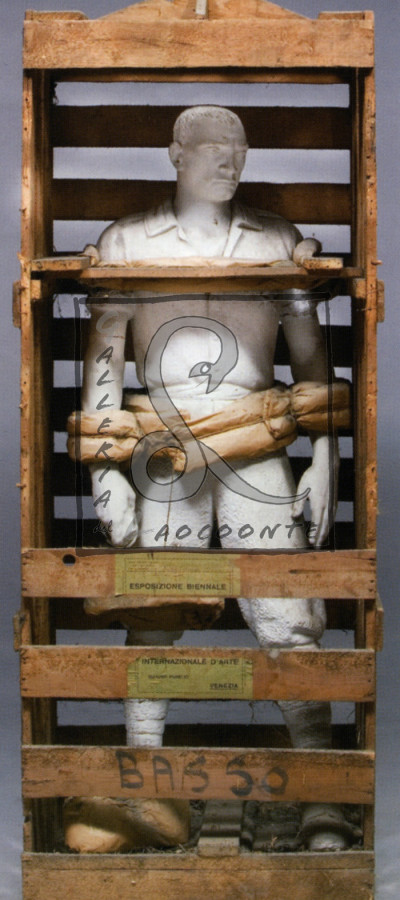

 Umberto Brunelleschi was born in Monterulo on 21st June, 1879. He studied at the Academy of Fine Arts in Florence, moving to Paris in 1900 where he found success as a painter, illustrator and designer. Under the pseudonym of Aron-al-Raxid or Aron-al-Rascid he worked as a caricaturist at the magazine ‘Le Rie’, as well as magazines such as the ‘Journal des Dames et des Modes’, ‘La Vie Parissienne’ and ‘Gazette du Bon Ton’. He was forced to interrupt his stay in Paris during World War I to go to the front line. In 1920, back in France, he worked on costumes for the ‘Folies Bergere’, at the Casino de Paris, Theatre du Chatelet. He also began to work for theatres in New York, Germany and at ‘La Scala’ in Milan. He was very well known among collectors of books for illustrating the works of Voltaire (Candide, 1933), Charles Perrault (Contes du Temp Jadis), Musset (La Nuit Valentienne) and Goethe (Les Bijoux Indiscretst). He died in Paris in 1949.
Umberto Brunelleschi was born in Monterulo on 21st June, 1879. He studied at the Academy of Fine Arts in Florence, moving to Paris in 1900 where he found success as a painter, illustrator and designer. Under the pseudonym of Aron-al-Raxid or Aron-al-Rascid he worked as a caricaturist at the magazine ‘Le Rie’, as well as magazines such as the ‘Journal des Dames et des Modes’, ‘La Vie Parissienne’ and ‘Gazette du Bon Ton’. He was forced to interrupt his stay in Paris during World War I to go to the front line. In 1920, back in France, he worked on costumes for the ‘Folies Bergere’, at the Casino de Paris, Theatre du Chatelet. He also began to work for theatres in New York, Germany and at ‘La Scala’ in Milan. He was very well known among collectors of books for illustrating the works of Voltaire (Candide, 1933), Charles Perrault (Contes du Temp Jadis), Musset (La Nuit Valentienne) and Goethe (Les Bijoux Indiscretst). He died in Paris in 1949.
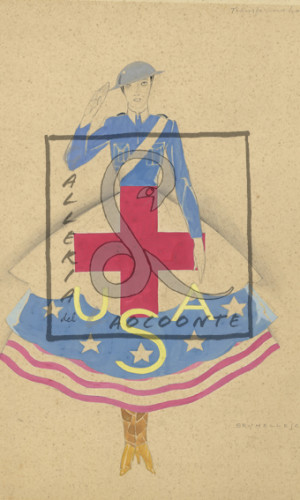
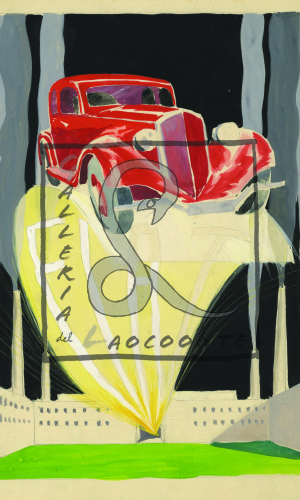
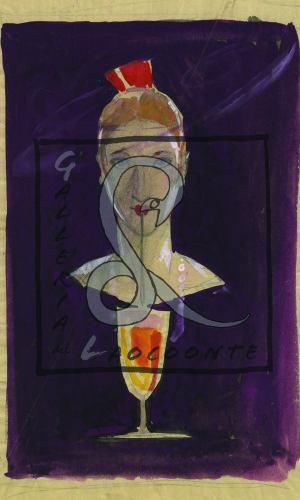

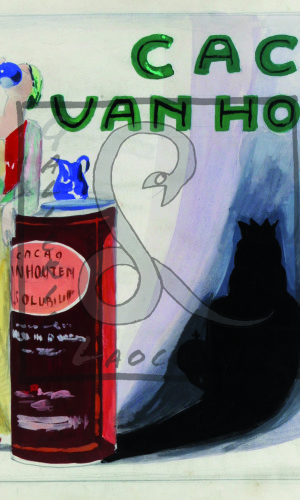
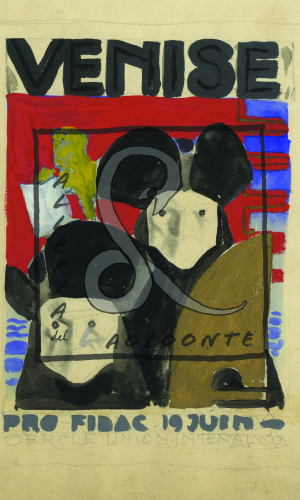

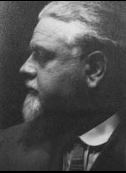

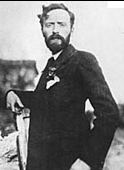 Felice Carena was born in Cumiana in 1879. He studied with Giacomo Grosso at ‘l’Accademia Albertina’ in Turin. After winning the ‘Pensionato Artistico Nazionale’ in 1906 he moved to Rome, and in 1910 he exhibited there at ‘Amatori e Cultori’. In 1912 he exhibited the works of his first period at the Venice Biennale, which showed strong poetic symbolism. In 1913 he was among the members of ‘Commissione Ordinatrice della Prima Secessione Romana’. During the First World War he found little time for art, but for his success in the field was appointed an artillery officer. Following this he moved to Anticoli Corrado, which would later become his favourite place for summer holidays. Between 1922 and 1924, together with the sculptor Attilio Selva, he created an art school at the Gardens of Sallust. Their lectures were attended, among others, by Emanuele Cavalli, Giuseppe Capogrossi and Fausto Pirandello. In 1924 he was appointed as a Professor at the Academy of Fine Arts in Florence and taught there until 1945. During his time in Florence he became friends with Soffici and Libero Andreotti, as well as becoming ‘Accademico D’Italia’ in 1933. In 1945 he moved to Venice, where he worked until his death in 1966.
Felice Carena was born in Cumiana in 1879. He studied with Giacomo Grosso at ‘l’Accademia Albertina’ in Turin. After winning the ‘Pensionato Artistico Nazionale’ in 1906 he moved to Rome, and in 1910 he exhibited there at ‘Amatori e Cultori’. In 1912 he exhibited the works of his first period at the Venice Biennale, which showed strong poetic symbolism. In 1913 he was among the members of ‘Commissione Ordinatrice della Prima Secessione Romana’. During the First World War he found little time for art, but for his success in the field was appointed an artillery officer. Following this he moved to Anticoli Corrado, which would later become his favourite place for summer holidays. Between 1922 and 1924, together with the sculptor Attilio Selva, he created an art school at the Gardens of Sallust. Their lectures were attended, among others, by Emanuele Cavalli, Giuseppe Capogrossi and Fausto Pirandello. In 1924 he was appointed as a Professor at the Academy of Fine Arts in Florence and taught there until 1945. During his time in Florence he became friends with Soffici and Libero Andreotti, as well as becoming ‘Accademico D’Italia’ in 1933. In 1945 he moved to Venice, where he worked until his death in 1966.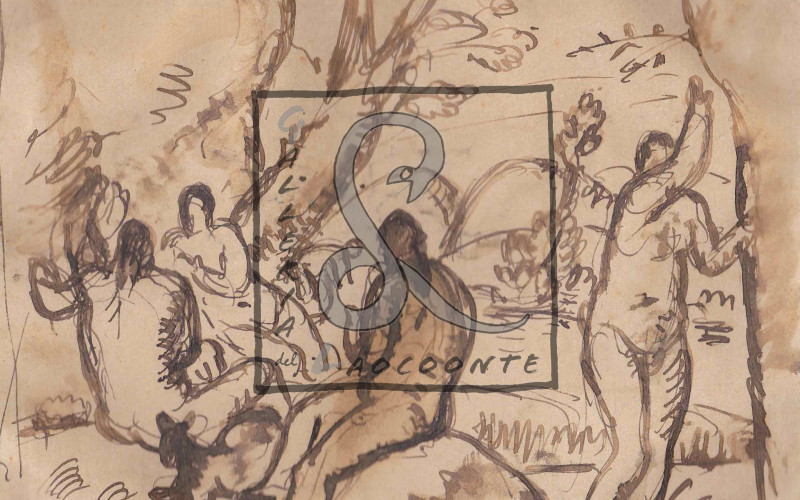

 Antonio Corpora was born in Tunis on 15th August 1909 to a Sicilian family. At 19 he attended ‘Ecole des Beaux Arts’ in Tunis, studying with Armand Vergeaud. He moved to Florence in 1929 and attended lessons under Felice Carena, then moved to Paris in 1930, after an exhibition at Palazzo Bardi. After much time in Paris he held his next exhibition at ‘Galleria Del Milone’ in Milan. His travels ended in 1945 when he moved permanently to Rome, living as a guest of Renato Guttuso with whom he created, ‘Fronte Nuovo Delle Arti’ with which he participated in his first Venice Biennale in 1948. In 1952 Corpora convinced Lionello Venturi to write a short essay to introduce ‘Gruppo Degli Otto’ at the Rome Biennale. He went on to win the Prize of Young Italian Painting, with some of his works also being purchased by the Ministry of Education for the Gallery of Modern Art in Rome. Following on from this he participated again at the Venice Biennale in 1956, 1960 and 1966, and presented internationally at ‘Kassel’, ‘Documenta I’ in 1955 and ‘Documenta II’ in 1959, as well as presenting personal exhibitions in Berlin, Paris and New York. In 2003, on the nomination of the National Academy of San Luca, the President of the Republic Carlo Azeglio Ciampi awarded him the National Award ‘Presidente Della Repubblica.’ He died in Rome in 2004 at the age of 95.
Antonio Corpora was born in Tunis on 15th August 1909 to a Sicilian family. At 19 he attended ‘Ecole des Beaux Arts’ in Tunis, studying with Armand Vergeaud. He moved to Florence in 1929 and attended lessons under Felice Carena, then moved to Paris in 1930, after an exhibition at Palazzo Bardi. After much time in Paris he held his next exhibition at ‘Galleria Del Milone’ in Milan. His travels ended in 1945 when he moved permanently to Rome, living as a guest of Renato Guttuso with whom he created, ‘Fronte Nuovo Delle Arti’ with which he participated in his first Venice Biennale in 1948. In 1952 Corpora convinced Lionello Venturi to write a short essay to introduce ‘Gruppo Degli Otto’ at the Rome Biennale. He went on to win the Prize of Young Italian Painting, with some of his works also being purchased by the Ministry of Education for the Gallery of Modern Art in Rome. Following on from this he participated again at the Venice Biennale in 1956, 1960 and 1966, and presented internationally at ‘Kassel’, ‘Documenta I’ in 1955 and ‘Documenta II’ in 1959, as well as presenting personal exhibitions in Berlin, Paris and New York. In 2003, on the nomination of the National Academy of San Luca, the President of the Republic Carlo Azeglio Ciampi awarded him the National Award ‘Presidente Della Repubblica.’ He died in Rome in 2004 at the age of 95.
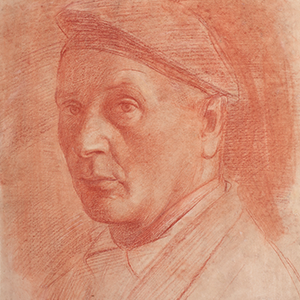
 Achille Virgilio Socrate Funi was born in Ferrara on February 26th, 1890. His early education was at the Art School ‘Dosso Dossi’ in Ferrara, after which he enrolled at ‘l’Accademia di Brera’, at which he attended between 1906 and 1910 with Cesare Tallone, and taught between 1939 and 1960. In 1914 he joined the Futurist movement. At the outbreak of World War I he enlisted with the battalion ‘Lombardo Volontari Ciclisti’ alongside Boccioni. The post-war years were decisive for the evolution of his painting, and in 1920 he held his first exhibition at the Art Gallery in Milan. At this time he also became close to Margherita Sarfatti, reiterating the techniques of Italian Renaissance painting. In 1922 he co-founded the Group ‘Sette Pittori del Novecento’, and in 1931 he participated in the first Quadriennale as a member of the School of Milan. In 1933, along with Mario Sironi and other artists, he signed the Manifesto of Mural Painting. In the forties he taught painting at the Academy of Fine Arts of Brera. His pupils included Giuseppe Ajmone, Valerio Pilon and Oreste Carpi. In 1945 he taught painting at ‘l’Accademia Carrara’ in Bergamo and subsequently became director, succeeding Luigi Brignoli. He died at Appiano Gentile on 26th July, 1972.
Achille Virgilio Socrate Funi was born in Ferrara on February 26th, 1890. His early education was at the Art School ‘Dosso Dossi’ in Ferrara, after which he enrolled at ‘l’Accademia di Brera’, at which he attended between 1906 and 1910 with Cesare Tallone, and taught between 1939 and 1960. In 1914 he joined the Futurist movement. At the outbreak of World War I he enlisted with the battalion ‘Lombardo Volontari Ciclisti’ alongside Boccioni. The post-war years were decisive for the evolution of his painting, and in 1920 he held his first exhibition at the Art Gallery in Milan. At this time he also became close to Margherita Sarfatti, reiterating the techniques of Italian Renaissance painting. In 1922 he co-founded the Group ‘Sette Pittori del Novecento’, and in 1931 he participated in the first Quadriennale as a member of the School of Milan. In 1933, along with Mario Sironi and other artists, he signed the Manifesto of Mural Painting. In the forties he taught painting at the Academy of Fine Arts of Brera. His pupils included Giuseppe Ajmone, Valerio Pilon and Oreste Carpi. In 1945 he taught painting at ‘l’Accademia Carrara’ in Bergamo and subsequently became director, succeeding Luigi Brignoli. He died at Appiano Gentile on 26th July, 1972.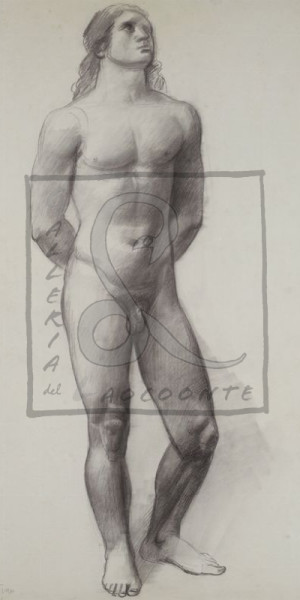
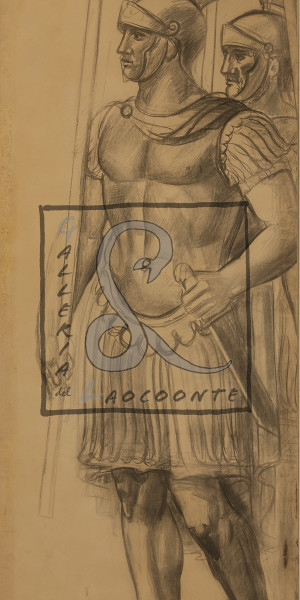
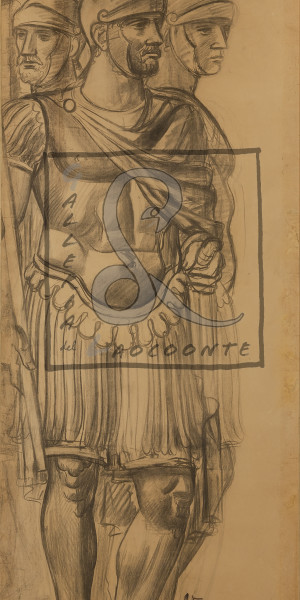
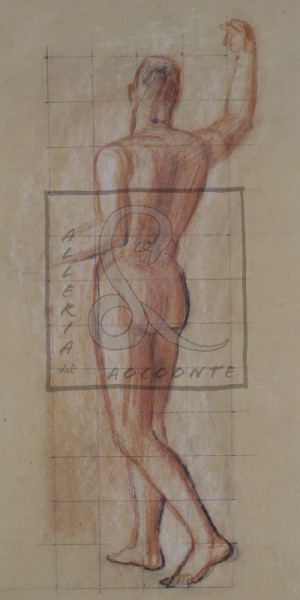

 Vittorio Grassi was born in Rome on 17th April 1878 to Giovanni Battista and Angela De Marchi. Following his father’s wishes, he was employed at the Bank of Italy where he discovered a way to make tamper-proof paper money. In 1902 he exhibited some of his paintings at the ‘Galassi Paluzzi’ in Perugia, and the following year he showed the same works at ‘Palazzo Delle Esposizioni’. In 1904 he began associating with some of the prominent figures of the art world in Rome, particularly Diulio Cambellotti, Giacomo Balla and G. Prini, who introduced him to ‘Gruppo dei XXV della Campagna Romana’. In 1908, alongside Cambellotti, Bottazzi, Marcucci and Menasci, he founded the magazine ‘La Casa’. In 1911 he participated at ‘Mostra Della Topografia Romana Antica’, which was held in the rooms of Castel Sant’Angelo, presenting a painting of a great panorama of the medieval city. In the same year, during the Roman celebration of the fiftieth anniversary of the Unification of Italy with Rome as its capital city, he made several ceramic panels for ‘La Casa’, a cottage in Lungotevere delle Armi. In 1912 he staged Macbeth at ‘Teatro Costanzi’ in Rome and also participated at the First ‘Mostra Della Vetrata Artistica’, where four stained glass windows of his design were shown. In the same year he designed some ceramic vases for Richard-Ginori adorned with frogs and snakes that were exhibited at the Venice Biennale. In 1913 and for the next two years he took part in the ‘Mostra Della Secessione Romana’. He also became the head of ornate engraving and scenography at ‘L’accademia Di Belle Arti’ in Rome. In 1915 he decorated the Italian pavilion at the International Exhibition of San Francisco. In 1921 he was called to illustrate the book Vita Nova by Dante Alighieri for ‘L’istituto D’Arti Grafiche’ in Bergamo. In 1923, together with Giovanni Prini, he decorated the hall of Music at the International Exhibition of Decorative Arts in Monza, and at the same exhibition in 1925 he decorated ‘Sala Degli Abitatori Della Campagna Romana’. In 1937 he became artistic director and head of Illustration for ‘l’Enciclopedia Treccani’. He died in Rome in 1958.
Vittorio Grassi was born in Rome on 17th April 1878 to Giovanni Battista and Angela De Marchi. Following his father’s wishes, he was employed at the Bank of Italy where he discovered a way to make tamper-proof paper money. In 1902 he exhibited some of his paintings at the ‘Galassi Paluzzi’ in Perugia, and the following year he showed the same works at ‘Palazzo Delle Esposizioni’. In 1904 he began associating with some of the prominent figures of the art world in Rome, particularly Diulio Cambellotti, Giacomo Balla and G. Prini, who introduced him to ‘Gruppo dei XXV della Campagna Romana’. In 1908, alongside Cambellotti, Bottazzi, Marcucci and Menasci, he founded the magazine ‘La Casa’. In 1911 he participated at ‘Mostra Della Topografia Romana Antica’, which was held in the rooms of Castel Sant’Angelo, presenting a painting of a great panorama of the medieval city. In the same year, during the Roman celebration of the fiftieth anniversary of the Unification of Italy with Rome as its capital city, he made several ceramic panels for ‘La Casa’, a cottage in Lungotevere delle Armi. In 1912 he staged Macbeth at ‘Teatro Costanzi’ in Rome and also participated at the First ‘Mostra Della Vetrata Artistica’, where four stained glass windows of his design were shown. In the same year he designed some ceramic vases for Richard-Ginori adorned with frogs and snakes that were exhibited at the Venice Biennale. In 1913 and for the next two years he took part in the ‘Mostra Della Secessione Romana’. He also became the head of ornate engraving and scenography at ‘L’accademia Di Belle Arti’ in Rome. In 1915 he decorated the Italian pavilion at the International Exhibition of San Francisco. In 1921 he was called to illustrate the book Vita Nova by Dante Alighieri for ‘L’istituto D’Arti Grafiche’ in Bergamo. In 1923, together with Giovanni Prini, he decorated the hall of Music at the International Exhibition of Decorative Arts in Monza, and at the same exhibition in 1925 he decorated ‘Sala Degli Abitatori Della Campagna Romana’. In 1937 he became artistic director and head of Illustration for ‘l’Enciclopedia Treccani’. He died in Rome in 1958.

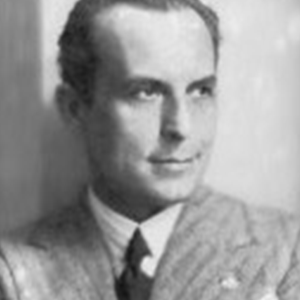
 Giovanni Guerrini was born in Imola in 1887. In Faenza he was part of the ‘cenacolo baccariniano’ – together with friends Domenico Rambelli, Ercole Drei and Giuseppe Ugonia – and at the local School of Design received a polytechnic education that would be deployed in many fields of expression: from painter, to lithographer, poster artist, designer of objects and furniture, builder and architect. In 1912 he exhibited for the first time at the Venice Biennale, at which he would present in 1914 and then every year between 1920 and 1936. In 1915 he moved to Ravenna as a teacher of Ornamentation and Architectural Design at the Academy of Fine Arts, later becoming the director of the School of Mosaic. In 1925 he won the contest for the manifesto of the II International Exhibition of Decorative Arts in Monza, and in 1926 he was invited to attend the first exhibition of ‘Novecento Italiano’. In 1927 he moved to Rome as artistic director of ENAPI and remained in the capital for life, returning periodically to his home town of Faenza. During the twenties and thirties he participated more often at important exhibitions. In Rome, he continued the activity of painting but devoted himself mainly to the design of objects and furniture for ENAPI, working in various materials. In 1938 he won, with M. Romano and E. Bruno La Padula the contest for the Palace of Italian Civilization in E42, this was the pinnacle of his architectural career. In 1939 he made six large mosaic panels for the fountains of the ‘Palazzo degli Uffizi’ in E42 and in 1941 won, alongside A. Capizzano, F. Gentilini and G. Quaroni, the competition for the mosaics to be placed in the ‘Palazzo dei Congressi’, also in E42. After the war he continued his activities with conferences and exhibitions (Lille in 1951, Rome in 1953, Paris in 1956 and Monaco of Bavaria 1957). He died in Rome in 1972.
Giovanni Guerrini was born in Imola in 1887. In Faenza he was part of the ‘cenacolo baccariniano’ – together with friends Domenico Rambelli, Ercole Drei and Giuseppe Ugonia – and at the local School of Design received a polytechnic education that would be deployed in many fields of expression: from painter, to lithographer, poster artist, designer of objects and furniture, builder and architect. In 1912 he exhibited for the first time at the Venice Biennale, at which he would present in 1914 and then every year between 1920 and 1936. In 1915 he moved to Ravenna as a teacher of Ornamentation and Architectural Design at the Academy of Fine Arts, later becoming the director of the School of Mosaic. In 1925 he won the contest for the manifesto of the II International Exhibition of Decorative Arts in Monza, and in 1926 he was invited to attend the first exhibition of ‘Novecento Italiano’. In 1927 he moved to Rome as artistic director of ENAPI and remained in the capital for life, returning periodically to his home town of Faenza. During the twenties and thirties he participated more often at important exhibitions. In Rome, he continued the activity of painting but devoted himself mainly to the design of objects and furniture for ENAPI, working in various materials. In 1938 he won, with M. Romano and E. Bruno La Padula the contest for the Palace of Italian Civilization in E42, this was the pinnacle of his architectural career. In 1939 he made six large mosaic panels for the fountains of the ‘Palazzo degli Uffizi’ in E42 and in 1941 won, alongside A. Capizzano, F. Gentilini and G. Quaroni, the competition for the mosaics to be placed in the ‘Palazzo dei Congressi’, also in E42. After the war he continued his activities with conferences and exhibitions (Lille in 1951, Rome in 1953, Paris in 1956 and Monaco of Bavaria 1957). He died in Rome in 1972.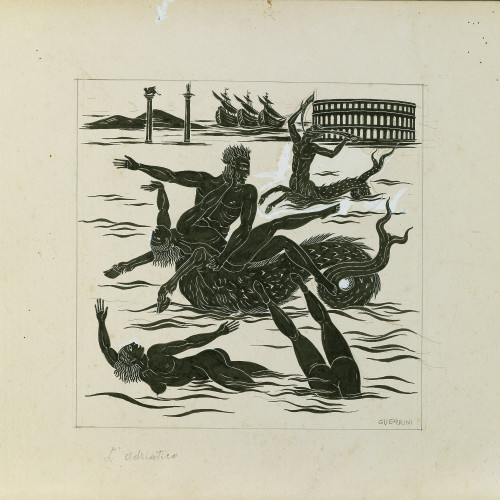
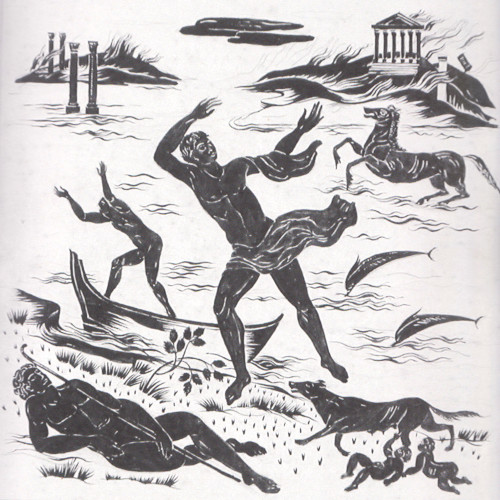

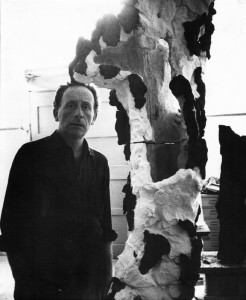 Leoncillo Leonardi was born in Spoleto on 18th November, 1915. In 1926 he enrolled at ‘Istituto Tecnico G. Spagna’, where his father had once taught. After failing his initial course he spent some time moulding clay, and following recommendation by the Calabrian sculptor Domenico Umberto Diano he joined ‘Istituto d’arte di Perugia’ in 1931, which he attended until 1935. It was during 1935 that he moved to Rome and met up with his older brother Lionello, who was teaching literature at religious institution ‘il Collegio S. Maria’. It was during these first years in Rome that he created his first notable works. In 1936 he came into contact with ‘Galleria la Cometa’, a meeting place for young artists such as; Mario Mafai; Antonietta Raphael; Corrado Cagli; Mirko and Afro Basaldella; Pericle Fazzini and Marino Mazzacurati. Although he drew deep inspiration from contact with what was called the Roman school, he spent several years working alone in his studio. In 1939 he left Rome and moved to Umbertide in Umbria, where he married Maria Zampa and had two children, Daniella and Leonetto. In Umbertide he came into contact with the ceramics factory owned by Settimio Rometti, which had a few years earlier been managed by Cagli. Here he perfected his knowledge on technical ceramic materials and their cooking and established a working relationship with Rometti, in whose furnaces he created sculptures of considerable size. In 1940, upon invitation from Gio Ponti, he took part in ‘VII Triennale di Milano’, sharing the room with S. Fancello and winning the gold medal for applied arts. In 1942 he returned to Rome where he taught plastic ceramics at ‘Istituto Statale d’Arte’, at which he stayed until 1952, working alongside Afro Basaldella, E. Colla and Fazzini. In the summer of the following year he introduced a series called ‘Mostri’ as part of a collective exhibition of young artists (including T. Scialoja, D. Purificato, G. Turcato & E. Vedova) at the gallery ‘La Cometa’ in Rome, receiving much acclaim. In December 1944, following a period of profound reflection, he began a collaboration which lasted several months with Roman periodical ‘La Settimana’, which hosted his drawings and above all his portraits of intellectuals. After this period he went on to exhibit at the Venice Biennale in 1948 and 1950 with the support of G Marchiori. The early fifties were an extremely productive time for Leonardi, and the fruits of his labour were also plentiful. In 1951 he won first prize for a garden sculpture at ‘II Mostra nazionale della ceramica’; in 1953 he obtained ‘il premio acquisto’ at The Art Exhibition of Spoleto, and in 1954 he won first prize at the XII National Competition of Ceramics in Faenza. In March 1957 he held an independent exhibition at ‘Galleria La Tartaruga’ in Rome, and in the same year he completed a decorative panel on the topic of work for the entrance of the headquarters of the ‘Istituto Nazionale Per La Previdenza Sociale’ in Ferrara. In 1959 he participated in the eighth Quadriennale in Rome, and in the same year he won first prize at ‘II Mostra Nazionale Della Ceramica E Dei Lavori In Metallo’ in Gubbio. In 1968, he exhibited at the Venice Biennale, where he set up his works of the last decade, hiding his sculptures with plastic sheeting as a sign of adherence to the protests of the young artists of the time. He died in Rome on 3rd September, 1968.
Leoncillo Leonardi was born in Spoleto on 18th November, 1915. In 1926 he enrolled at ‘Istituto Tecnico G. Spagna’, where his father had once taught. After failing his initial course he spent some time moulding clay, and following recommendation by the Calabrian sculptor Domenico Umberto Diano he joined ‘Istituto d’arte di Perugia’ in 1931, which he attended until 1935. It was during 1935 that he moved to Rome and met up with his older brother Lionello, who was teaching literature at religious institution ‘il Collegio S. Maria’. It was during these first years in Rome that he created his first notable works. In 1936 he came into contact with ‘Galleria la Cometa’, a meeting place for young artists such as; Mario Mafai; Antonietta Raphael; Corrado Cagli; Mirko and Afro Basaldella; Pericle Fazzini and Marino Mazzacurati. Although he drew deep inspiration from contact with what was called the Roman school, he spent several years working alone in his studio. In 1939 he left Rome and moved to Umbertide in Umbria, where he married Maria Zampa and had two children, Daniella and Leonetto. In Umbertide he came into contact with the ceramics factory owned by Settimio Rometti, which had a few years earlier been managed by Cagli. Here he perfected his knowledge on technical ceramic materials and their cooking and established a working relationship with Rometti, in whose furnaces he created sculptures of considerable size. In 1940, upon invitation from Gio Ponti, he took part in ‘VII Triennale di Milano’, sharing the room with S. Fancello and winning the gold medal for applied arts. In 1942 he returned to Rome where he taught plastic ceramics at ‘Istituto Statale d’Arte’, at which he stayed until 1952, working alongside Afro Basaldella, E. Colla and Fazzini. In the summer of the following year he introduced a series called ‘Mostri’ as part of a collective exhibition of young artists (including T. Scialoja, D. Purificato, G. Turcato & E. Vedova) at the gallery ‘La Cometa’ in Rome, receiving much acclaim. In December 1944, following a period of profound reflection, he began a collaboration which lasted several months with Roman periodical ‘La Settimana’, which hosted his drawings and above all his portraits of intellectuals. After this period he went on to exhibit at the Venice Biennale in 1948 and 1950 with the support of G Marchiori. The early fifties were an extremely productive time for Leonardi, and the fruits of his labour were also plentiful. In 1951 he won first prize for a garden sculpture at ‘II Mostra nazionale della ceramica’; in 1953 he obtained ‘il premio acquisto’ at The Art Exhibition of Spoleto, and in 1954 he won first prize at the XII National Competition of Ceramics in Faenza. In March 1957 he held an independent exhibition at ‘Galleria La Tartaruga’ in Rome, and in the same year he completed a decorative panel on the topic of work for the entrance of the headquarters of the ‘Istituto Nazionale Per La Previdenza Sociale’ in Ferrara. In 1959 he participated in the eighth Quadriennale in Rome, and in the same year he won first prize at ‘II Mostra Nazionale Della Ceramica E Dei Lavori In Metallo’ in Gubbio. In 1968, he exhibited at the Venice Biennale, where he set up his works of the last decade, hiding his sculptures with plastic sheeting as a sign of adherence to the protests of the young artists of the time. He died in Rome on 3rd September, 1968.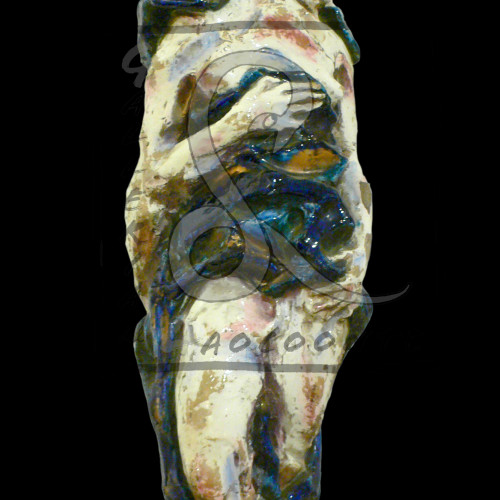

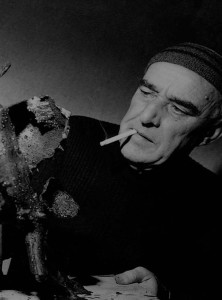 Marcello Mascherini was born in Udine on September 14th, 1906 and was renounced by his father. In 1910 his mother moved to Trieste and during the First World War took refuge in Isernia, where Mascherini learnt the first rudiments of sculpture in the workshops of local able craftsmen and took a Diploma at the local ‘Regia Scuola D’Arte’ relating to this industry. Having returned to Trieste (in 1921) he enrolled at the Istituto Industriale Alessandro Volta, attending courses in ornamental sculpture under the guidance of sculpture Professor A. Canciani, later replaced by F. Asco. It was in fact in the studio of the latter, only three years later, that Mascherini reworked the style of the academies of Vienna, Venice and Rome, to which Canciani was also connected, developing his own language which was more deeply rooted in the quality of expression. In December 1924, upon graduating, he held his debut exhibition, presenting Chalk Works to the ‘Circolo Artistico di Trieste’. In 1928 he created ‘stucchi’ for the ‘Politeama Rossetti’ and was commissioned by architect U. Nordio to decorate the new Palace of Justice, for which he formed some great sculptures of jurors (1934). Thanks to his two profiles in bronze of the Duke and the King made for the ship ‘Victoria I’ (1930) Mascherini started a profitable business decorating ships. In 1934, following his rise to national acclaim through participation in several large architectural sites, Nordio invited him to collaborate in the tender for the ‘Palazzo del Littorio di Roma’. The Thirties were studded with success for Mascherini, culminating in the ‘Premio Unico dell’Accademia D’Italia’ for sculpture, awarded by Mussolini himself on April 21, 1940. This award crowned a series of international awards that had begun with the gold medal at ‘VI Mostra Regionale Giuliana di Trieste’ (1932) and continued with the silver medal at ‘V Triennale di Milano’ (1933), first prize for sculpture at ‘VII Interprovinciale d’arte di Trieste’ (1933), the award at ‘Mostra dell Aeronautica di Milano’ (staged by Gio Ponti) in 1934, and with the medal for the centenary of the Lloyd from Trieste (1936). These prizes preceded a series of invitations and international successes: from the Exhibition of Italian art in Budapest in 1936 to the assignment for the construction of one of the statues of the pediment of the Italia pavilion at the Universal Exhibition in Paris (for which he was awarded the Gold medal) in 1937, and again to the prize in 1937 at the Exhibition of Italian art in Paris. To sanctify him in the Hall of Italian sculptors a monograph was published in 1945 by A. Pica, with a foreword by G. Stuparich, he was also appointed in 1948 as a member of St. Luca, and finally participated in 1949 in the exhibition of Italian art of the twentieth century at the Museum of Modern Art in New York. In 1967 he moved to Sistiana, in the Karst region, continuing to exhibit from there. At an exhibition in Milan in 1970, in the Corriere della Sera (11 May 1970) D. Buzzati noted how the creative fervour of Mascherini came specifically from the vegetation of the Karst: ‘It seems to me that the greatest inspiration comes from little trees, woods, shrubs luckily clinging to stones […] plants, blown by the wind of the area to create life and movement. ‘ In the seventies Mascherini continued to work, and lent himself to the creation of imposing public monuments. He died in Padua on 19th February 1983.
Marcello Mascherini was born in Udine on September 14th, 1906 and was renounced by his father. In 1910 his mother moved to Trieste and during the First World War took refuge in Isernia, where Mascherini learnt the first rudiments of sculpture in the workshops of local able craftsmen and took a Diploma at the local ‘Regia Scuola D’Arte’ relating to this industry. Having returned to Trieste (in 1921) he enrolled at the Istituto Industriale Alessandro Volta, attending courses in ornamental sculpture under the guidance of sculpture Professor A. Canciani, later replaced by F. Asco. It was in fact in the studio of the latter, only three years later, that Mascherini reworked the style of the academies of Vienna, Venice and Rome, to which Canciani was also connected, developing his own language which was more deeply rooted in the quality of expression. In December 1924, upon graduating, he held his debut exhibition, presenting Chalk Works to the ‘Circolo Artistico di Trieste’. In 1928 he created ‘stucchi’ for the ‘Politeama Rossetti’ and was commissioned by architect U. Nordio to decorate the new Palace of Justice, for which he formed some great sculptures of jurors (1934). Thanks to his two profiles in bronze of the Duke and the King made for the ship ‘Victoria I’ (1930) Mascherini started a profitable business decorating ships. In 1934, following his rise to national acclaim through participation in several large architectural sites, Nordio invited him to collaborate in the tender for the ‘Palazzo del Littorio di Roma’. The Thirties were studded with success for Mascherini, culminating in the ‘Premio Unico dell’Accademia D’Italia’ for sculpture, awarded by Mussolini himself on April 21, 1940. This award crowned a series of international awards that had begun with the gold medal at ‘VI Mostra Regionale Giuliana di Trieste’ (1932) and continued with the silver medal at ‘V Triennale di Milano’ (1933), first prize for sculpture at ‘VII Interprovinciale d’arte di Trieste’ (1933), the award at ‘Mostra dell Aeronautica di Milano’ (staged by Gio Ponti) in 1934, and with the medal for the centenary of the Lloyd from Trieste (1936). These prizes preceded a series of invitations and international successes: from the Exhibition of Italian art in Budapest in 1936 to the assignment for the construction of one of the statues of the pediment of the Italia pavilion at the Universal Exhibition in Paris (for which he was awarded the Gold medal) in 1937, and again to the prize in 1937 at the Exhibition of Italian art in Paris. To sanctify him in the Hall of Italian sculptors a monograph was published in 1945 by A. Pica, with a foreword by G. Stuparich, he was also appointed in 1948 as a member of St. Luca, and finally participated in 1949 in the exhibition of Italian art of the twentieth century at the Museum of Modern Art in New York. In 1967 he moved to Sistiana, in the Karst region, continuing to exhibit from there. At an exhibition in Milan in 1970, in the Corriere della Sera (11 May 1970) D. Buzzati noted how the creative fervour of Mascherini came specifically from the vegetation of the Karst: ‘It seems to me that the greatest inspiration comes from little trees, woods, shrubs luckily clinging to stones […] plants, blown by the wind of the area to create life and movement. ‘ In the seventies Mascherini continued to work, and lent himself to the creation of imposing public monuments. He died in Padua on 19th February 1983.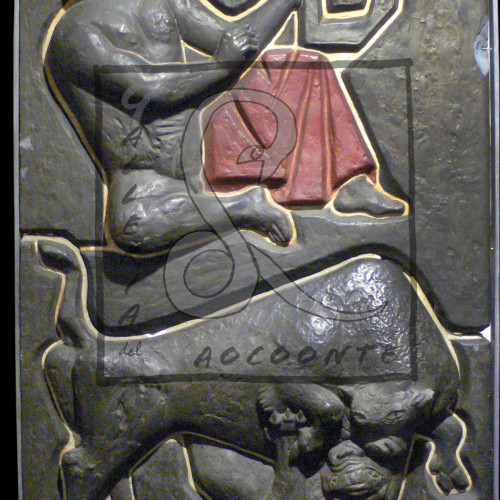

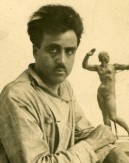 Publio Morbiducci was born in Rome on 28th August, 1889, he was the second son of Luigi, a metal worker, and Anna Maria Polizzi, who worked in a print shop. In 1900 he had to interrupt his studies for regular work as a coachbuilder, this was as a result of economic hardship falling upon his family. He continued, however, to study independently and in 1904, thanks to a brief stint in the workshop of a painter who specialised in tapestries, learned the rudiments of pictorial art, showing a distinct artistic inclination. He then attended ‘L’Instituto di Belle Arti’, where he met Duilio Cambellotti who he would always consider to be his master. In 1911 he was admitted to ‘Scuola D’Arte Della Medaglia’, where thanks to a series of grants, he studied until 1915. It was at this point that he exhibited two Roman bronze masks at ‘Secessione Romana’, it was these masks that launched his career amongst the sculptors of the time. After that he moved on to specialise in coins and medals, and in 1923 he won a competition for the design of the two-lira coin. In 1924 Ugo Ojetti presented his exhibition of medals at the American Numismatic Society in New York. In 1931, on the recommendation of Mussolini, he won the contest for the ‘Monumento al Bersagliere di Roma’, creating a figure of the popular sharpshooter. Between 1930 and 1940 he became one of the great artists of the fascist regime, and went on to be the protagonist in the exhibition to mark the tenth anniversary of the Fascist Revolution. In 1937 he was appointed a member of ‘Accademia di San Luca’. In 1939 he married Nicoletta Olga De Marchis, with whom he had his only daughter, Anna Maria (1940). From this period came the last of his monumental works: in 1939 he was commissioned to create the big marble frieze at ‘Palazzo degli Uffizi’ and in 1940, one of the groups of ‘Dioscuri’ for ‘il Palazzo della Civiltá Italiana’, whose execution was suspended for the war and completed in 1956. He died in Rome on 31st March, 1963.
Publio Morbiducci was born in Rome on 28th August, 1889, he was the second son of Luigi, a metal worker, and Anna Maria Polizzi, who worked in a print shop. In 1900 he had to interrupt his studies for regular work as a coachbuilder, this was as a result of economic hardship falling upon his family. He continued, however, to study independently and in 1904, thanks to a brief stint in the workshop of a painter who specialised in tapestries, learned the rudiments of pictorial art, showing a distinct artistic inclination. He then attended ‘L’Instituto di Belle Arti’, where he met Duilio Cambellotti who he would always consider to be his master. In 1911 he was admitted to ‘Scuola D’Arte Della Medaglia’, where thanks to a series of grants, he studied until 1915. It was at this point that he exhibited two Roman bronze masks at ‘Secessione Romana’, it was these masks that launched his career amongst the sculptors of the time. After that he moved on to specialise in coins and medals, and in 1923 he won a competition for the design of the two-lira coin. In 1924 Ugo Ojetti presented his exhibition of medals at the American Numismatic Society in New York. In 1931, on the recommendation of Mussolini, he won the contest for the ‘Monumento al Bersagliere di Roma’, creating a figure of the popular sharpshooter. Between 1930 and 1940 he became one of the great artists of the fascist regime, and went on to be the protagonist in the exhibition to mark the tenth anniversary of the Fascist Revolution. In 1937 he was appointed a member of ‘Accademia di San Luca’. In 1939 he married Nicoletta Olga De Marchis, with whom he had his only daughter, Anna Maria (1940). From this period came the last of his monumental works: in 1939 he was commissioned to create the big marble frieze at ‘Palazzo degli Uffizi’ and in 1940, one of the groups of ‘Dioscuri’ for ‘il Palazzo della Civiltá Italiana’, whose execution was suspended for the war and completed in 1956. He died in Rome on 31st March, 1963.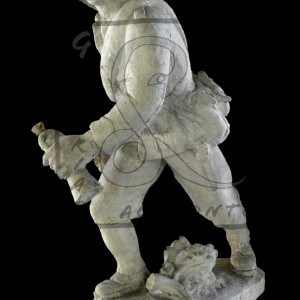
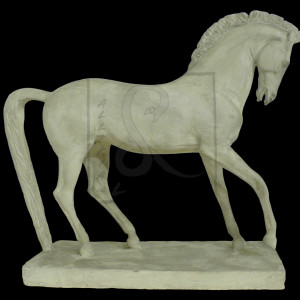


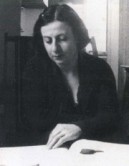 Marisa Mori (Maria Luisa Lurini) was born in Florence on 9th March, 1900. In signing her works she used the surname of her husband Mario Mori, a topographer, journalist and poet whom she married in the early twenties. In 1918 she moved with her family to Turin, where her journey into the painting world was made alone apart from some advice and encouragement by the sculptor Leonardo Bistolfi, a family friend. Later she enrolled at the private school founded and directed by Felice Casorati, at which she attended classes between 1925 and 1931 before working there. In 1926 she participated in ‘Esposizione delle vedute di Torino’ at Palazzo Bricherasio along with a group of students of the Casorati School, including Nella Marchesini, Daphne Maugham, Paola Levi Montalcini and Lalla Romano. Whilst in Turin she also took part in various exhibitions organized by the ‘Promotrice di belle arti del Valentino’ (1927, 1928, 1930). She also participated in the IV Turin Quadrenniale (1927), the Annual Exhibition of Casorati (1928); Then also in the ‘Sindacali’ of 1929, 1930, 1931 and 1932. In November 1931, in Chiavari, she participated in the exhibition of Futurist painting, sculpture and decorative arts by designing a series of ceramics that were then produced by the company Mazzotti in Albisola. In 1932, her commitment to Futurism was sanctioned by intense exhibition activity conducted together with the second generation of futurists from the regions of Liguria and Piemonte. In 1933 she was invited to the first National Futurist Exhibition in Rome, also moving to Florence with her husband, with whom she became part of the futurist group led by Antonio Marasco. Again in 1933, she won a prize at ‘I Mostra futurista di scenotecnica cinematografica’ at the Bardi Gallery in Rome for a plastic of the film ‘Sintesi dell’isola d’Elba’. Her interest in theatre and cinema led her in the mid-thirties to enrol at the acting school of the Academy of Fidenti in Florence, where, after the war, she taught history of costume. She also contributed to the drafting of ‘Cucina futurista di Marinetti e Fillia’. In April of 1934 she set up her first personal exhibition in ‘Spazio Bragaglia’ in Rome. Her futurist work was also exhibited at the Rome Quadriennale in 1931, 1935 (Ritorno dalle colonie marine) and 1939 (Concerto di fabbrica sulle Apuane). In the late thirties, in sharp disagreement with the enactment of the racial laws, she showed hospitality to Rita and Gino Levi Montalcini and put into question her relationship with futurism. Later, after her husband’s death in 1943, she finally abandoned the Marinetti movement to return to a matrix representation of classical and naturalistic themes such as portraits, still life’s, masks and nudes. In 1951 she presented a painting, ‘Studio per il ritratto di Vera Zalla’, at the VI Rome Quadriennale, after which she led a secluded life, exposing rarely and almost exclusively in women’s art exhibitions sponsored by the cultural circle Florentine Lyceum. In this last phase of her career she painted mostly human figures, landscapes or still life’s, participating also in numerous extemporaneous painting competitions. She died in Florence on 6th March, 1985.
Marisa Mori (Maria Luisa Lurini) was born in Florence on 9th March, 1900. In signing her works she used the surname of her husband Mario Mori, a topographer, journalist and poet whom she married in the early twenties. In 1918 she moved with her family to Turin, where her journey into the painting world was made alone apart from some advice and encouragement by the sculptor Leonardo Bistolfi, a family friend. Later she enrolled at the private school founded and directed by Felice Casorati, at which she attended classes between 1925 and 1931 before working there. In 1926 she participated in ‘Esposizione delle vedute di Torino’ at Palazzo Bricherasio along with a group of students of the Casorati School, including Nella Marchesini, Daphne Maugham, Paola Levi Montalcini and Lalla Romano. Whilst in Turin she also took part in various exhibitions organized by the ‘Promotrice di belle arti del Valentino’ (1927, 1928, 1930). She also participated in the IV Turin Quadrenniale (1927), the Annual Exhibition of Casorati (1928); Then also in the ‘Sindacali’ of 1929, 1930, 1931 and 1932. In November 1931, in Chiavari, she participated in the exhibition of Futurist painting, sculpture and decorative arts by designing a series of ceramics that were then produced by the company Mazzotti in Albisola. In 1932, her commitment to Futurism was sanctioned by intense exhibition activity conducted together with the second generation of futurists from the regions of Liguria and Piemonte. In 1933 she was invited to the first National Futurist Exhibition in Rome, also moving to Florence with her husband, with whom she became part of the futurist group led by Antonio Marasco. Again in 1933, she won a prize at ‘I Mostra futurista di scenotecnica cinematografica’ at the Bardi Gallery in Rome for a plastic of the film ‘Sintesi dell’isola d’Elba’. Her interest in theatre and cinema led her in the mid-thirties to enrol at the acting school of the Academy of Fidenti in Florence, where, after the war, she taught history of costume. She also contributed to the drafting of ‘Cucina futurista di Marinetti e Fillia’. In April of 1934 she set up her first personal exhibition in ‘Spazio Bragaglia’ in Rome. Her futurist work was also exhibited at the Rome Quadriennale in 1931, 1935 (Ritorno dalle colonie marine) and 1939 (Concerto di fabbrica sulle Apuane). In the late thirties, in sharp disagreement with the enactment of the racial laws, she showed hospitality to Rita and Gino Levi Montalcini and put into question her relationship with futurism. Later, after her husband’s death in 1943, she finally abandoned the Marinetti movement to return to a matrix representation of classical and naturalistic themes such as portraits, still life’s, masks and nudes. In 1951 she presented a painting, ‘Studio per il ritratto di Vera Zalla’, at the VI Rome Quadriennale, after which she led a secluded life, exposing rarely and almost exclusively in women’s art exhibitions sponsored by the cultural circle Florentine Lyceum. In this last phase of her career she painted mostly human figures, landscapes or still life’s, participating also in numerous extemporaneous painting competitions. She died in Florence on 6th March, 1985.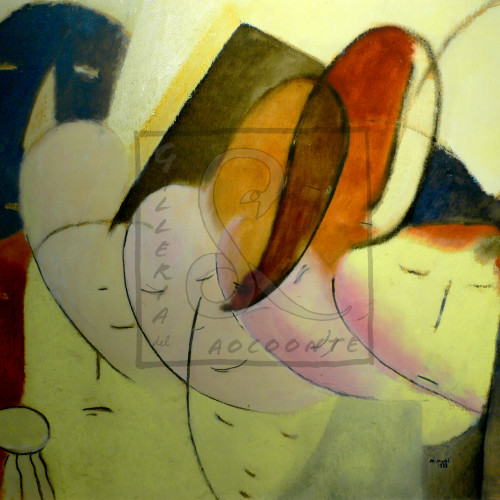

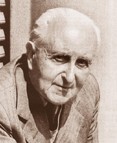 Giuseppe Novello was born in Codogno on 7th July 1897. He attended il Regio liceo Berchet in Milan, the city where he had moved in 1912 and where he often visited the studio of the painter uncle, who encouraged his early inclination for art. Called up to the army in 1917, he fought in the Alps as part of 46th company of the Tirano battalion, being involved in the defeat of Caporetto. After the war, in 1920, he graduated in law at Pavia with a thesis on copyright in the visual arts. Meanwhile, in 1919 he had enrolled at ‘Accademia di belle arti’ of Brera, where he studied painting with Ambrose Alciati, graduating in 1924. The following year he took part in the exhibition of Brera, winning the Fumagalli prize. At the same time he continued his work as an illustrator, producing 46 boards on the theme of war for ‘La canzone dei verdi’, presented by Renzo Boccardi (Monza 1927). Since the early years, and even more so now, both the appearance and path of Novello’s work showed a duplicity that would accompany him throughout his career. On the one hand the painter showed elements of the serene natural language of post-impressionist derivation, and on the other the subtle irony that was the signature of the cartoonist . In Milan he frequented ‘la Trattoria toscana Pepori’, which was a meeting place for artists and intellectuals such as Ottavio Steffenini, Bernardino Palazzi, Adolfo Franci, Ugo Ojetti, Mario Vellani Marchi, Anselmo Bucci, Arturo Martini and Paolo Monelli. Starting from 1927 he took part in almost all exhibitions held at the ‘Permanente’ in Milan, and also exhibited at the Quadriennale in Rome in 1931 and at the Venice Biennale in 1934, 1936 and 1940 (at which he won the competition for portrait). In the thirties he achieved national and international acclaim as an illustrator thanks to the publishing house ‘Mondadori’, who produced two volumes that collected the cartoons he had made for ‘Fuori sacco’: ‘The gentleman of good family’, 1934; ‘What will people say?’, 1937 (reprinted several times) . Showing the gentle humour of Anglo-Saxon ancestry along with effective graphic imitation, he was also appreciated abroad, so much so that his works were published in newspapers such as ‘Libertad’ (1933), ‘Berliner Illustrirte Zeitung’ (1934) and ‘Je suis partout’ (1934). At the outbreak of World War II he was called up to the 5th Alpine Regiment and survived the tragic experience of the Russian campaign, evidenced by letters sent to his sister Lotti, also the protagonist of many of his paintings. After returning to Italy in March 1943 and the armistice, he was imprisoned on 9th September in Fortezza and a day later was deported to the concentration camp for Italian officers in Częstochowa; from there he was transferred to Benjaminovo, Sandbostel and finally Wietzendorf camp, where he refused to join the ‘Repubblica di Salò’. In the cell where he remained locked up with his companions for two years, he made many drawings, maintaining the morale of his fellow inmates with his vis comica. Assumed dead by many news reports, in 1945 he returned to Italy and began to divide his life between Milan and Codogno, alternating between humorous illustration and painting. In the 1950s he renewed his relationship with ‘Mondadori’, who published his drawings of war in the volume ‘Steppa e gabbia’ (1957) as well as several of his illustrations. In 1965 he ended his relationship with ‘La Stampa’, wishing to devote himself mainly to painting, in which he continued to remain true to its relaxed and pleasant language whilst deliberately steering clear of the contemporary avant-garde vocabularies. His last works included an illustrated volume about theatre as well as a melodrama published by Ponte Rosso in 1978 for the 200th anniversary celebration of La Scala. Also the collection published by Archinto for his ninetieth birthday called ‘delle spiritose Cartoline-lametta’ (1987). In 1984 he was awarded the merit of Ambrogino d’oro by the City of Milan. He died on 2nd February, 1988 in Codogno.
Giuseppe Novello was born in Codogno on 7th July 1897. He attended il Regio liceo Berchet in Milan, the city where he had moved in 1912 and where he often visited the studio of the painter uncle, who encouraged his early inclination for art. Called up to the army in 1917, he fought in the Alps as part of 46th company of the Tirano battalion, being involved in the defeat of Caporetto. After the war, in 1920, he graduated in law at Pavia with a thesis on copyright in the visual arts. Meanwhile, in 1919 he had enrolled at ‘Accademia di belle arti’ of Brera, where he studied painting with Ambrose Alciati, graduating in 1924. The following year he took part in the exhibition of Brera, winning the Fumagalli prize. At the same time he continued his work as an illustrator, producing 46 boards on the theme of war for ‘La canzone dei verdi’, presented by Renzo Boccardi (Monza 1927). Since the early years, and even more so now, both the appearance and path of Novello’s work showed a duplicity that would accompany him throughout his career. On the one hand the painter showed elements of the serene natural language of post-impressionist derivation, and on the other the subtle irony that was the signature of the cartoonist . In Milan he frequented ‘la Trattoria toscana Pepori’, which was a meeting place for artists and intellectuals such as Ottavio Steffenini, Bernardino Palazzi, Adolfo Franci, Ugo Ojetti, Mario Vellani Marchi, Anselmo Bucci, Arturo Martini and Paolo Monelli. Starting from 1927 he took part in almost all exhibitions held at the ‘Permanente’ in Milan, and also exhibited at the Quadriennale in Rome in 1931 and at the Venice Biennale in 1934, 1936 and 1940 (at which he won the competition for portrait). In the thirties he achieved national and international acclaim as an illustrator thanks to the publishing house ‘Mondadori’, who produced two volumes that collected the cartoons he had made for ‘Fuori sacco’: ‘The gentleman of good family’, 1934; ‘What will people say?’, 1937 (reprinted several times) . Showing the gentle humour of Anglo-Saxon ancestry along with effective graphic imitation, he was also appreciated abroad, so much so that his works were published in newspapers such as ‘Libertad’ (1933), ‘Berliner Illustrirte Zeitung’ (1934) and ‘Je suis partout’ (1934). At the outbreak of World War II he was called up to the 5th Alpine Regiment and survived the tragic experience of the Russian campaign, evidenced by letters sent to his sister Lotti, also the protagonist of many of his paintings. After returning to Italy in March 1943 and the armistice, he was imprisoned on 9th September in Fortezza and a day later was deported to the concentration camp for Italian officers in Częstochowa; from there he was transferred to Benjaminovo, Sandbostel and finally Wietzendorf camp, where he refused to join the ‘Repubblica di Salò’. In the cell where he remained locked up with his companions for two years, he made many drawings, maintaining the morale of his fellow inmates with his vis comica. Assumed dead by many news reports, in 1945 he returned to Italy and began to divide his life between Milan and Codogno, alternating between humorous illustration and painting. In the 1950s he renewed his relationship with ‘Mondadori’, who published his drawings of war in the volume ‘Steppa e gabbia’ (1957) as well as several of his illustrations. In 1965 he ended his relationship with ‘La Stampa’, wishing to devote himself mainly to painting, in which he continued to remain true to its relaxed and pleasant language whilst deliberately steering clear of the contemporary avant-garde vocabularies. His last works included an illustrated volume about theatre as well as a melodrama published by Ponte Rosso in 1978 for the 200th anniversary celebration of La Scala. Also the collection published by Archinto for his ninetieth birthday called ‘delle spiritose Cartoline-lametta’ (1987). In 1984 he was awarded the merit of Ambrogino d’oro by the City of Milan. He died on 2nd February, 1988 in Codogno.

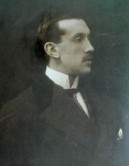
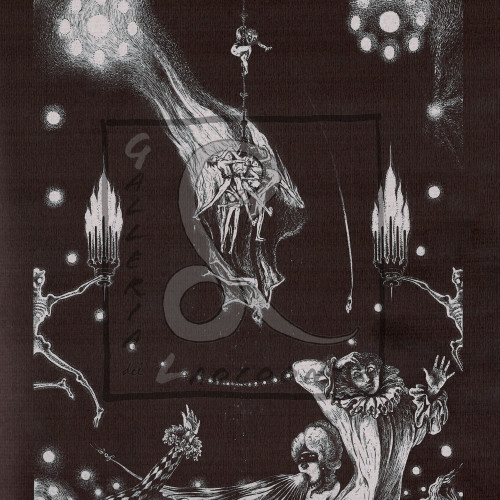
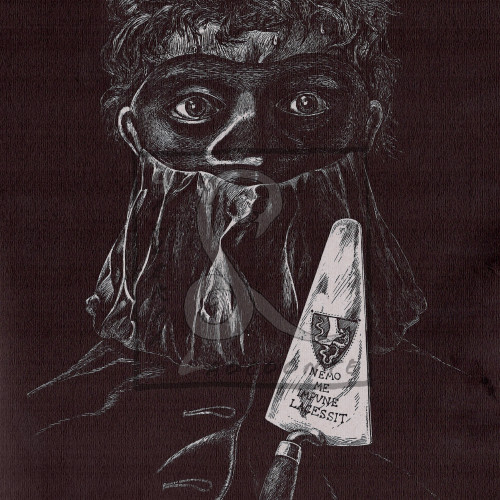

 Giuseppe Rivaroli was born in Cremona in 1885. In 1928 in Rome he created two monumental works with his frescoes at the Office of the Ministry of the Navy. In 1932, also in Rome, he worked for two months on a large project for the decoration of the International Institute of Agriculture: a joyous exaltation symbolising Agriculture, rural life and the family firm. The scene is full of movement and vitality, and through the use of light shows the preciousness of the crops, fruit and flowers. It is particularly notable for its many nudes, all of which appreciate the careful study of the attitudes of the hands, and has feet placed with beautiful frankness in continuous evidence. After performing these masterpieces in Rome and also working in other cities of Italy, Rivaroli had a well-deserved reputation and was held in high esteem by critics and the public alike. At the age of 37 he lived at the same address in Rome as the artists Sartorio, Coleman, Carlandi and Costa. These artists had previously followed the same physical and spiritual path, with the same search of colours, images, sounds and emotions evident in their works. A painting by Rivaroli is never dark, it lives with its own light, the light that he is able to transmit in those who he most loved to paint: men, animals and the countryside. He died in Rome in 1943.
Giuseppe Rivaroli was born in Cremona in 1885. In 1928 in Rome he created two monumental works with his frescoes at the Office of the Ministry of the Navy. In 1932, also in Rome, he worked for two months on a large project for the decoration of the International Institute of Agriculture: a joyous exaltation symbolising Agriculture, rural life and the family firm. The scene is full of movement and vitality, and through the use of light shows the preciousness of the crops, fruit and flowers. It is particularly notable for its many nudes, all of which appreciate the careful study of the attitudes of the hands, and has feet placed with beautiful frankness in continuous evidence. After performing these masterpieces in Rome and also working in other cities of Italy, Rivaroli had a well-deserved reputation and was held in high esteem by critics and the public alike. At the age of 37 he lived at the same address in Rome as the artists Sartorio, Coleman, Carlandi and Costa. These artists had previously followed the same physical and spiritual path, with the same search of colours, images, sounds and emotions evident in their works. A painting by Rivaroli is never dark, it lives with its own light, the light that he is able to transmit in those who he most loved to paint: men, animals and the countryside. He died in Rome in 1943.

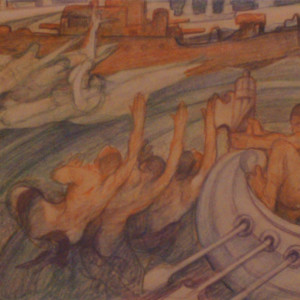
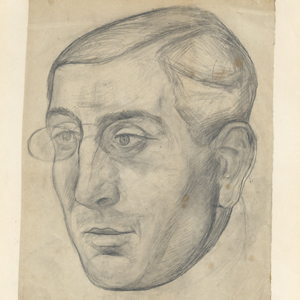
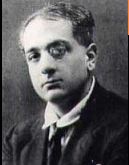 Alberto Savinio, also known as Andrea Francesco Alberto de Chirico, was born in Athens on 25th August, 1891. He was the third son of Evaristo de Chirico, railway engineer and brother of Giogio de Chirico. As a child he studied piano and composition at the Conservatoire of Athens, from which he graduated in 1903. Following the death of his father in 1905, his family moved to Monaco di Baviera. After complete failure with his early compositions, in 1911 he moved to Paris where he came into contact with personalities such as Pablo Picasso, Blaise Cendrars, Francis Picabia, Jaen Cocteau, Max Jacob and Guillaume Apollinaire. In 1914, he published ‘Les Chants de la mi-mort’ for the magazine ‘Les Soirees de Paris’, going by the pseudonym of Alberto Savinio for the first time. In 1915 he returned to Italy and, along with his brother Georgio, was enlisted in the 27th Infantry Regiment in Ferrara, before being transferred to Thessaloniki as an interpreter. In 1923 he moved to Rome where he was among the founders of the ‘Compagnia del Teatro dell’Arte’, directed by Luigi Pirandello and for which he wrote, but did not stage, Captain Ulysses. After marrying Maria Morino, who bore him two sons, and after another brief stay in Paris, where he dedicated himself particularly to painting, he settled in Rome in 1934. Whilst in Rome he collaborated with ‘La Stampa’ and other magazines such as ‘Colonna’ and ‘il Bolletto’. In 1938 André Breton published ‘Anthologie de l’humor noir’ in which he spoke about Alberto Savinio, notably the only Italian featured in the publication. Perhaps because of a piece of satire on Leopardi (il sorbetto di Leopardi), published in 1939 in the weekly Omnibus of Leo Longanesi, which brought him hostility from the fascist regime, he was forced into hiding in 1943 having learned that his name was on a list of suspected anti-fascists. After the war he continued to critique cultural offerings in the columns of the ‘Corriere della Sera’, winning the Saint Vincent Prize for Journalism in 1949. He also worked as a playwright and director, writing his own plays for the theatre. In 1951 he wrote ‘tragicommedia mimata e danzata – Vita del Uomo’, an allegory of human existence created around music inspired by the style of Schumann. In 1952 at ‘Maggio Musicale Fiorentino’, he directed a famous staging of Rossini’s ‘Armidai with Maria Callas, also overseeing the set and costumes. He died in Rome on 5th May, 1952
Alberto Savinio, also known as Andrea Francesco Alberto de Chirico, was born in Athens on 25th August, 1891. He was the third son of Evaristo de Chirico, railway engineer and brother of Giogio de Chirico. As a child he studied piano and composition at the Conservatoire of Athens, from which he graduated in 1903. Following the death of his father in 1905, his family moved to Monaco di Baviera. After complete failure with his early compositions, in 1911 he moved to Paris where he came into contact with personalities such as Pablo Picasso, Blaise Cendrars, Francis Picabia, Jaen Cocteau, Max Jacob and Guillaume Apollinaire. In 1914, he published ‘Les Chants de la mi-mort’ for the magazine ‘Les Soirees de Paris’, going by the pseudonym of Alberto Savinio for the first time. In 1915 he returned to Italy and, along with his brother Georgio, was enlisted in the 27th Infantry Regiment in Ferrara, before being transferred to Thessaloniki as an interpreter. In 1923 he moved to Rome where he was among the founders of the ‘Compagnia del Teatro dell’Arte’, directed by Luigi Pirandello and for which he wrote, but did not stage, Captain Ulysses. After marrying Maria Morino, who bore him two sons, and after another brief stay in Paris, where he dedicated himself particularly to painting, he settled in Rome in 1934. Whilst in Rome he collaborated with ‘La Stampa’ and other magazines such as ‘Colonna’ and ‘il Bolletto’. In 1938 André Breton published ‘Anthologie de l’humor noir’ in which he spoke about Alberto Savinio, notably the only Italian featured in the publication. Perhaps because of a piece of satire on Leopardi (il sorbetto di Leopardi), published in 1939 in the weekly Omnibus of Leo Longanesi, which brought him hostility from the fascist regime, he was forced into hiding in 1943 having learned that his name was on a list of suspected anti-fascists. After the war he continued to critique cultural offerings in the columns of the ‘Corriere della Sera’, winning the Saint Vincent Prize for Journalism in 1949. He also worked as a playwright and director, writing his own plays for the theatre. In 1951 he wrote ‘tragicommedia mimata e danzata – Vita del Uomo’, an allegory of human existence created around music inspired by the style of Schumann. In 1952 at ‘Maggio Musicale Fiorentino’, he directed a famous staging of Rossini’s ‘Armidai with Maria Callas, also overseeing the set and costumes. He died in Rome on 5th May, 1952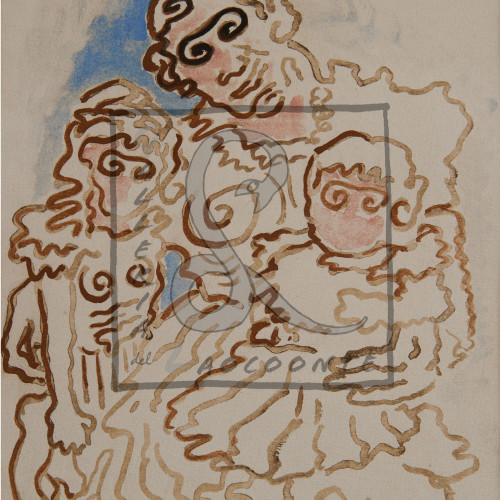
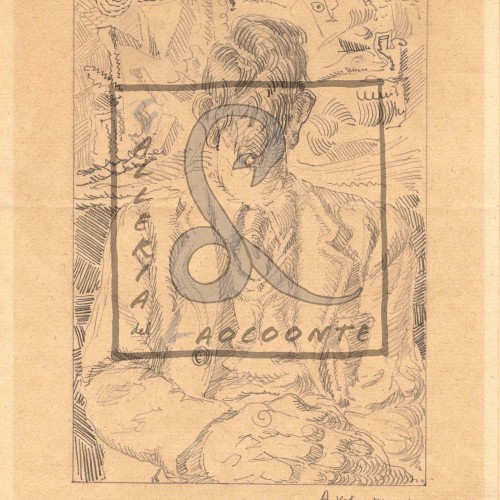
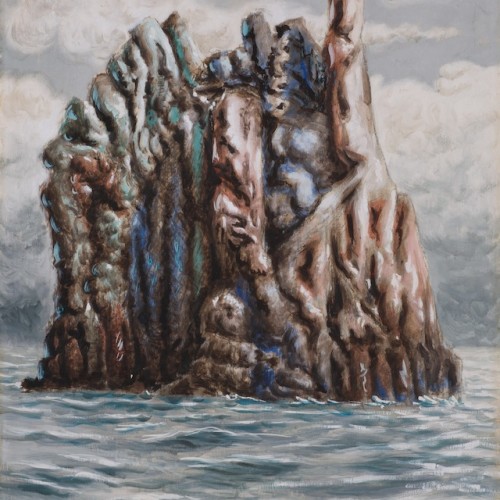
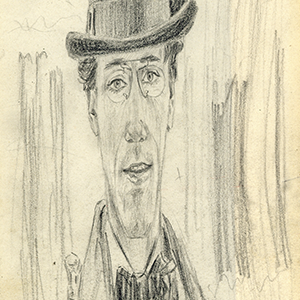
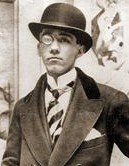
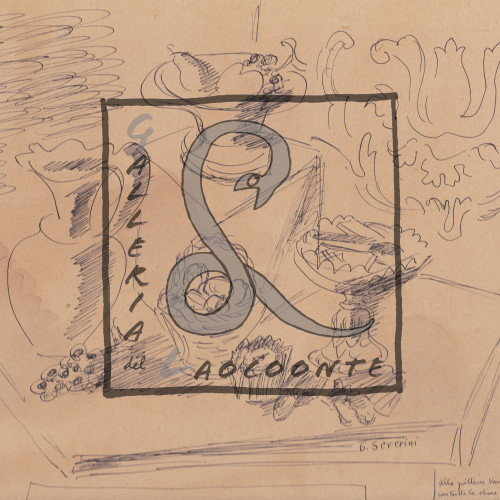

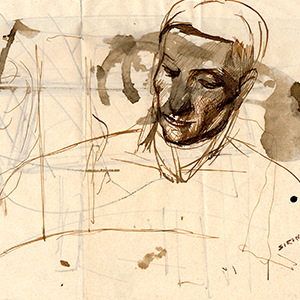
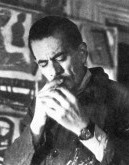 Mario Sironi was born in Sassari on 12th May 1885. He was the second of six children. Following the untimely death of his father, who left him orphaned at the age of thirteen, he moved to Rome where he studied. He spent his adolescence in a house on Via di Porta Salaria, not far from Villa Borghese. It was an adolescence marked not only by the charm of the Eternal City, but also by a great passion for reading (Schopenhauer, Nietzsche, Heine, Leopardi, the French novelists) and the study of music, especially Wagner, who played the piano with his older sister Cristina. In 1902 he began to study engineering but a year later, encouraged by the positive opinion of the old sculptor Ximenes, he left and devoted himself to painting, attending ‘Scuola Libera del Nudo’ in via Ripetta and studying with Giacomo Balla. Here he also met Boccioni, Severini and other artists. In 1914 he moved to Milan, where he fought alongside Marinetti in the First World War. In the post-war period he worked as an illustrator in the magazine ‘Popolo d’Italia’, and during this time there he met Margherita Sarfatti. In 1920 he signed ‘il manifesto futurista’ along with Leonardo Dudreville, Achille Funi and Luigi and in 1922 he joined the group of artists called ‘Novecento’. From the beginning of the thirties the artistic interests of Sironi diversified, ranging from graphics to stage design, from architecture to mural painting and from mosaics to frescoes. In 1932 Sironi contributed to ‘Mostra della Rivoluzione Fascista’, held at ‘Palazzo delle Esposizioni’ in Rome. His taste for the monumental and spectacular can be seen in many of his works, especially those created for the state (the Palace of Justice in Milan, buildings in Rome’s Eur, etc.). It was with the same flare that Sironi prepared the hall of honour at the Festival of Sport in Milan (1935), the Fiat pavilion at the Trade Fair of Milan (1936) and the Italian section at the Universal Exhibition in Paris (1937). After World War II, isolated and weathered by the death of his daughter, he returned to easel painting, creating works of intense expressiveness. These works were dark and dramatic, abandoning the monumental character and great eloquence of prior years in favour of a different, more resigned spatial conception. He died in Milan on 13th March, 1961 .
Mario Sironi was born in Sassari on 12th May 1885. He was the second of six children. Following the untimely death of his father, who left him orphaned at the age of thirteen, he moved to Rome where he studied. He spent his adolescence in a house on Via di Porta Salaria, not far from Villa Borghese. It was an adolescence marked not only by the charm of the Eternal City, but also by a great passion for reading (Schopenhauer, Nietzsche, Heine, Leopardi, the French novelists) and the study of music, especially Wagner, who played the piano with his older sister Cristina. In 1902 he began to study engineering but a year later, encouraged by the positive opinion of the old sculptor Ximenes, he left and devoted himself to painting, attending ‘Scuola Libera del Nudo’ in via Ripetta and studying with Giacomo Balla. Here he also met Boccioni, Severini and other artists. In 1914 he moved to Milan, where he fought alongside Marinetti in the First World War. In the post-war period he worked as an illustrator in the magazine ‘Popolo d’Italia’, and during this time there he met Margherita Sarfatti. In 1920 he signed ‘il manifesto futurista’ along with Leonardo Dudreville, Achille Funi and Luigi and in 1922 he joined the group of artists called ‘Novecento’. From the beginning of the thirties the artistic interests of Sironi diversified, ranging from graphics to stage design, from architecture to mural painting and from mosaics to frescoes. In 1932 Sironi contributed to ‘Mostra della Rivoluzione Fascista’, held at ‘Palazzo delle Esposizioni’ in Rome. His taste for the monumental and spectacular can be seen in many of his works, especially those created for the state (the Palace of Justice in Milan, buildings in Rome’s Eur, etc.). It was with the same flare that Sironi prepared the hall of honour at the Festival of Sport in Milan (1935), the Fiat pavilion at the Trade Fair of Milan (1936) and the Italian section at the Universal Exhibition in Paris (1937). After World War II, isolated and weathered by the death of his daughter, he returned to easel painting, creating works of intense expressiveness. These works were dark and dramatic, abandoning the monumental character and great eloquence of prior years in favour of a different, more resigned spatial conception. He died in Milan on 13th March, 1961 .
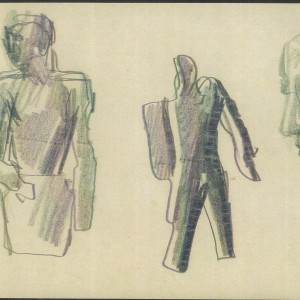
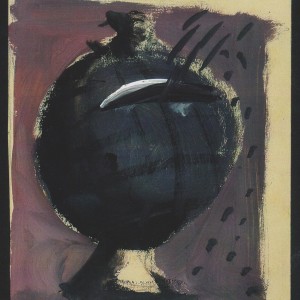
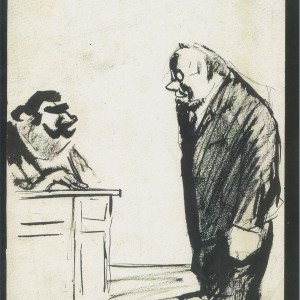
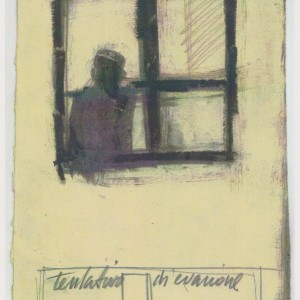
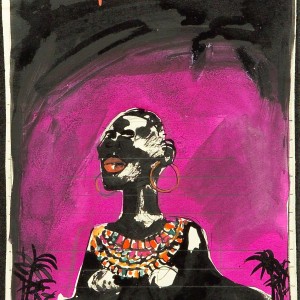
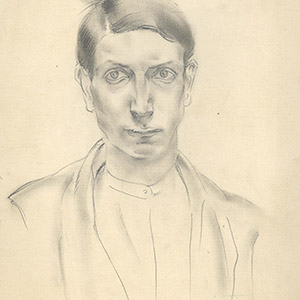

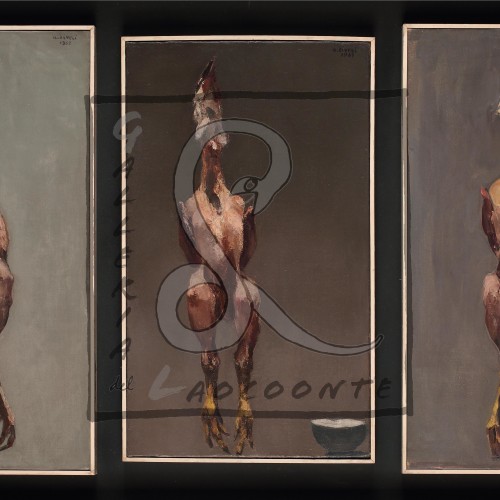


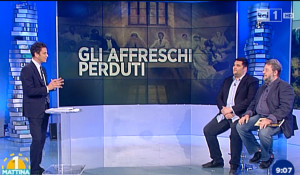 Dopo una prima tappa alla Galleria del Laocoonte a Roma, la mostra “Pietro Gaudenzi: gli affreschi perduti del Castello dei Cavalieri a Rodi” approda al Museo di Anticoli Corrado, il borgo amato dagli artisti della prima metà del Novecento per la bellezza del paesaggio e dei modelli locali. Nell’esclusiva cornice del giardino pensile di Palazzo Gaudenzi adiacente al Museo, frequentato negli anni Trenta da alcune delle più importanti personalità dell’arte e della letteratura, verrà presentato il catalogo della mostra, frutto di ricerche inedite sul pittore genovese.
Dopo una prima tappa alla Galleria del Laocoonte a Roma, la mostra “Pietro Gaudenzi: gli affreschi perduti del Castello dei Cavalieri a Rodi” approda al Museo di Anticoli Corrado, il borgo amato dagli artisti della prima metà del Novecento per la bellezza del paesaggio e dei modelli locali. Nell’esclusiva cornice del giardino pensile di Palazzo Gaudenzi adiacente al Museo, frequentato negli anni Trenta da alcune delle più importanti personalità dell’arte e della letteratura, verrà presentato il catalogo della mostra, frutto di ricerche inedite sul pittore genovese.